OEA/Ser.G
CP/INF. 4702/02
1 July 2002
Original: English
REPORT OF THE COMMISSION OF INQUIRY
INTO THE EVENTS OF DECEMBER 17, 2001, IN HAITI
http://scm.oas.org/pdfs/2002/cp10027c.pdf
http://scm.oas.org/pdfs/2002/cp10027l.pdf
TABLE OF CONTENTS
I. INTRODUCTION................................................................................................... 1
........... Historical background................................................................................................. 1
Composition of the Commission of Inquiry .................................................................... 3
Methodology of the Report.......................................................................................... 4
II. THE FACTS............................................................................................................ 4
A. The armed attack on the National Palace in Port-au-Prince during the early hours of Monday, December 17, 2006............................................................................................... 5
1. Background.............................................................................................. 5
2. The events of December 17, 2001............................................................. 6
a. The facts............................................................................................. 6
i. .. Penetration of the National Palace................................................. 6
ii. Occupation of the National Palace................................................. 6
iii. .. Escape and pursuit........................................................................ 7
b. Objectives and responsibility for the attack on the National Palace .......... 9
i. The objectives of the attack on the National Palace ........................ 9
ii. Responsibility for the attack ........................................................... 9
B. Ransacking and burning of the headquarters of the political parties of the Opposition, the private residences of the leaders of the Convergence Démocratique, and of cultural and academic centers, national or foreign, in Port-au-Prince and in other cities and localities... 10
1. Background ............................................................................................ 10
2. Headquarters of the political parties of the Opposition ............................... 11
a. In Port-au-Prince.............................................................................. 11
b. In other cities and towns .................................................................... 13
i. Area of Gonaïves ...................................................................... 13
ii. Area of Petit Goâve .................................................................. 14
iii. Area of Cap-Haïtien .................................................................. 14
iv. Area of Les Cayes .................................................................... 15
3. Private residences of the leaders of Convergence Démocratique............. 15
a. In Port-au-Prince.............................................................................. 15
b. In other cities and towns .................................................................... 16
i. Area of Gonaïves ...................................................................... 16
ii. Area of Petit Goâve .................................................................. 16
iii. Area of Cap-Haïtien .................................................................. 17
iv. Area of Les Cayes .................................................................... 18
v. Area of Hinche ......................................................................... 18
4. Cultural and academic centers ................................................................. 18
C. Possible links between the incidents mentioned in A and B above, and violent incidents of July 28, 2001, in Port-au-Prince and in other places in Haiti .......................................... 19
1. The violent incidents of July 28, 2001 ........................................................ 19
a. Introduction...................................................................................... 19
b. In Port-au-Prince.............................................................................. 21
c. In other cities and towns .................................................................... 22
i. Mireblais .................................................................................... 22
ii. Belladère .................................................................................... 23
iii. Hinche ....................................................................................... 23
d. Consequences of the attacks ............................................................. 23
i. Port-au-Prince............................................................................ 23
ii. Mirebalais.................................................................................. 24
iii. Belladère.................................................................................... 24
iv. Hinche....................................................................................... 24
e. Ineffectiveness of the police response................................................ 25
2. Possible links between the incidents of July 28, 2001, and December 17, 2001 25
D. The attacks, intimidation and threats against members of the press and owners of the media on December 17, 2001, and the following days ......................................................................... 27
1. Background ............................................................................................ 27
2. Attacks, intimidation and threats against members of the press ................... 27
3. Attacks, intimidation and threats against owners of the media .................... 29
III. CONCLUSIONS.................................................................................................... 29
IV. RECOMMENDATIONS....................................................................................... 32
APPENDICES TO THE REPORT OF THE COMMISSION OF ENQUIRY INTO
THE EVENTS OF DECEMBER 17, 2001 ....................................................................... 37
APPENDICE I................................................................................................................................... 39
APPPENDICE II................................................................................................................ 47
APPENDICE III .................................................................................................................. 53
APPENDICE IV .................................................................................................................. 54
APPENDICE V .................................................................................................................................. 56
APPENDICE VI .................................................................................................................. 67
APPENDICE VII ................................................................................................................ 70
APPENDICE VIII ............................................................................................................... 72
APPENDICE IX .................................................................................................................. 74
APPENDICE X.................................................................................................................. 77
Report OF THE COMMISSION OF iNQUIRY
INTO THE EVENTS OF DECEMBER 17, 2001, IN HAITI
I. INTRODUCTION
Historical background
Although Dr. Francois Duvalier came to power through elections in 1957, he subsequently presided over a uniquely vicious authoritarian regime. With the help of a private militia, political dissent was systematically and completely eradicated, and all opponents were either jailed or murdered. After his death in 1971 the leadership of the country passed to his son Jean-Claude Duvalier, who ruled the country for the next 15 years in a manner similar to his father's. During that period political Opposition continued to grow, especially within the army, and early in 1986, under sustained opposition from the opposing politicians and the armed forces, Jean-Claude was forced to flee the country. A succession of military governments followed before the country began the transition to civilian rule.
A Constituent Assembly which had been appointed for the purpose produced a new draft Constitution on March 10, 1987. The new Constitution was to be published after it had been approved by a referendum, and it came into force later that year. The Constitution provides for a bicameral legislature, consisting of an 83-member Chamber of Deputies and a 27-member Senate, and for the conduct of legislative and presidential elections every five years. The President, who is Head of State, may not succeed himself. He may serve an additional and final term after an interval of five years. He is not permitted to run for a third term. The Constitution provides for presidential elections to be held on the last Sunday in November in the fifth year of the President's term. He assumes office on February 7 following the date of the elections. Presidential elections which were held in mid-December 1990 under the supervision of the United Nations and the Organization of American States (OAS) brought to power Mr. Jean Bertrand Aristide, leader of the Front National pour le Changement et la Démocratie. In January 1991, a former Minister of Interior from the Duvaliers' regime, Mr. Roger Lafontant, attempted an unsuccessful coup d'etat. However, in September 1991 the army chief, Brigadier-General Raoul Cedras, seized power in a military coup, and President Aristide went into exile.
In June 1992, the army installed a civilian government under Prime Minister Marc Bazin, who was one of the Presidential candidates defeated by President Aristide in the 1990 elections. This army-led government remained in power until the President was allowed to return to the country in October 1994 to resume his truncated term of office. General elections were held in December 1995 and the successful candidate was Mr. Rene Preval, whose government was dogged by violence and instability throughout its term. In January 1999, President Preval dissolved Parliament pending Parliamentary elections which were repeatedly postponed until May 21, 2000. During that period Haiti was without a working Parliament. Presidential elections were held in November that year, at which Mr. Aristide of the Fanmi Lavalas party emerged as the successful candidate.
The results of the legislative, municipal and local elections which had been held on May 21, 2000, were publicly disputed and have since then dominated the political climate. The results were suspended following objections from the Opposition political parties and the international community. A rerun of those elections on July 9 that year produced the same result although a boycott by the main political parties under the umbrella of the Convergence Démocratique meant that the victory of Fanmi Lavalas party was even more decisive.
Two very significant events followed. On July 28, 2001, several armed men took over the Police Academy and occupied a number of police stations, causing death, injury to persons and damage to property. None of those persons was apprehended. In the early hours of December 17, 2001, armed men entered and occupied the Presidential Palace, also causing death, damage and injury at the Palace and on their route out of Port-au-Prince. Only one of the perpetrators was apprehended.
On January 16, 2002, the Permanent Council of the OAS approved resolution CP/RES. 806 (1303/02), which called for a thorough independent inquiry into the events related to the December 17, 2001, to be held. The Heads of Government of the Caribbean Community (CARICOM) at their thirteenth Inter-Sessional meeting accepted the recommendation of a CARICOM special mission which had visited Haiti that an independent International Commission of Inquiry be established to make an evaluation of the events of December 17, 2001.
The tenor of resolution CP/RES. 806 (1303/02) is the restoration, through a series of decisive measures by the Government of Haiti, of "a climate of security that is a necessary condition for resuming OAS-sponsored negotiations...." The Secretary General and the Assistant Secretary General, through the Special Representative of the Secretary General in Port-au-Prince, have spearheaded this effort, in collaboration with CARICOM and with the support of the Group of Friends of Haiti. The resolution places responsibility "on all political parties, with the support of civil society and other relevant institutions in Haiti," to help create those enabling conditions for negotiations, "with a view to reaching an agreement to resolve the political crisis."
In this regard, the new Prime Minister's language of openness and his expressed commitment to negotiations are encouraging and reassuring. More commendable is the recent arrest of some individuals who have been implicated in serious criminal activities, to face justice. Having political party operatives submit to the Rule of Law is a major act of political and moral courage. Such bold gestures will serve as a deterrent to violations of human rights, inspire confidence in the Government and contribute immensely to the creation of a climate of security in the country.
On March 15, 2002, President Aristide appointed Mr. Yvon Neptune, former President of the Senate, as the new Prime Minister, and a new Council of Ministers has been constituted, including Mr. Marc L. Bazin as Minister without Portfolio to facilitate improved conditions for negotiations, and the Government has been showing signs of its willingness to compromise.
On the basis of consultations with CARICOM and the Government of Haiti, the Secretary General of the OAS decided to appoint a Commission of Inquiry of three persons with the following terms of reference:
"1. Beginning in April 2002, the three Commissioners shall inquire into the circumstances surrounding the following events:
An armed attack on the National Palace in Port-au-Prince during the early hours of Monday, December 17, 2001.
The ransacking and burning of the headquarters of political parties of the Opposition, of private residences of leaders of the Convergence Démocratique and of cultural and academic centers, foreign and national, in Port-au-Prince, and other cities and localities.
c. Any possible links between the incidents in (a) and (b) above and violent incidents on July 28, 2001 in Port-au-Prince and elsewhere in Haiti.
d. Attacks, intimidation and threats directed to members of the press and owners of media outlets on December 17, 2001 and subsequent days.
2. The inquiry shall be independent and separate from any judicial proceedings in Haiti.
3. On or before June 30, 2002 the three commissioners shall submit their report on the inquiry to the Government of Haiti and to the OAS Secretary General. It shall contain their findings of fact and recommendations to the Government of Haiti and shall reflect their independent deliberations and conclusions based on those findings of facts."
This Commission is one of three bodies established by the OAS to provide assistance to Haiti in an effort to resolve the political crisis which exists in that country. The Advisory Council on Reparations has been mandated to present recommendations to the Inter-Ministerial Committee formed by the Government of Haiti for the purpose of registering demands for damages and proceeding to make reparation. It is in the process of establishing a general framework which will distinguish categories of occurrences and damages and recommend expeditious ways and procedures for assessing each category on its merits. The framework is expected to be completed soon. All documentation provided to our Commission on material and physical damage has been sent to the Office of the Representative of the OAS in Port-au-Prince so that it could be transmitted to the pertinent authorities in charge of reparations. Upon receiving documents, the Commission pointed out that interested parties should address themselves directly to the organizations established with the specific function of dealing with the reparations.
The OAS has also appointed a Special Mission for Strengthening Democracy in Haiti. This Mission has already commenced its work and will be in a good position to assist the Government of Haiti to implement some of the recommendations made in this Report.
Composition of the Commission of Inquiry
The Commission comprises three jurists: Roberto Flores Bermúdez, former Foreign Minister of Honduras; Alonso Gómez Robledo, a Professor of International Law from Mexico; and Nicholas Liverpool, a former Judge of Appeal in the Courts of The Bahamas, Belize, Grenada, and the Organization of Eastern Caribbean States. The Executive Secretary of the Commission is Dr. Bertha Santoscoy, on leave from the Inter-American Commission on Human Rights (IACHR).
Following meetings on April 5 at OAS headquarters in Washington, D.C., the Commissioners traveled to Haiti on April 8 to commence their work. Three visits were paid to Haiti on April 8 to 23, May 13 to 23, and June 11 to 17. During these periods the Commissioners held hearings in Port-au-Prince and also in the Provinces, specifically in the towns of Gonaïves, Petit-Goâve, Cap-Haïtien and Les Cayes.
The Commission had audiences with President Jean Bertrand Aristide, Prime Minister Yvon Neptune and other Ministers of Government. It also held meetings with the Group of Friends of Haiti, which is comprised mainly of the Ambassadors or Representatives of the main donor countries, the Papal Nuncio and other senior Representatives of the Roman Catholic Church, the Ambassadors of France and the United States of America, the Resident Representative of the United Nations Development Programme, and the OAS Ambassador to Haiti, Mr. Sergio Romero.
The Commission received evidence from many groups and individuals. A complete list is attached as Appendix I. Several documents and films were presented to the Commission in support of the evidence adduced. A list of those documents is to be found in Appendix II. The Commission visited many homes and institutions which were destroyed. A list of those is contained in Appendix VII. Throughout its report the Commission refers to acts which have been committed in breach of the provisions of the Constitution of Haiti and of the Democratic Charter. The relevant provisions are reproduced in Appendices V and VIII. *
The Commission received the support of the President, the Government, public officials and the people of Haiti in carrying out its mandate. In particular the Commission received the full support of the Minister of Foreign Affairs, Mr. Joseph Philippe Antonio, and his staff, who did everything possible to ensure that the work of the Commission proceeded smoothly and on time. The Commission wishes to thank them for their support.
Thanks are also due to Ambassador Sergio Romero and his staff for their unswerving attention and courtesy at all times. Finally, the Commission wishes to thank Dr. Bertha Santoscoy, the Executive Secretary, and her dedicated staff in Haiti for the support which they have provided during this three-month period.
Methodology of the Report
This report is the result of the evidence and documentation received by the Commission on the violent acts of December 17 in Haiti, and their relationship with the events of July 28, 2001, which the Commission gathered and received during its visits to Haiti.
The Commission gave consideration to the testimony from the Haitian authorities, the representatives of the Convergence Démocratique, the victims of the violent events, the media, the representatives of Civil Society, human rights groups and Popular Organizations. The Commission took into account the official documents provided by the Government of Haiti. All the information was analyzed by the Commission and, where pertinent, incorporated in the present report.
The Commission traveled to Gonaïves, Petit-Goâve, Cap-Haïtien and Les Cayes to meet with victims, political party representatives, administrative authorities, and members of the Police. On its visits, the Commission also inspected the homes that were damaged or destroyed and the headquarters of Opposition political parties that were ransacked and burned.
II. THE FACTS
The facts contained herein are based on all the relevant information received by the Commission during its hearings and interviews.
A. The armed attack on the National Palace in Port-au-Prince during the early hours of Monday, December 17, 2001
1. Background
Since the restoration of democracy in Haiti through the elections held on December 16, 1990, the National Palace, seat of the Presidency of the Republic, has been the object of armed attacks. According to the Report of the OAS Electoral Observer Mission in Haiti, 70 acts of violence were reported consequent to the elections of May 21, 2000, of which seven related to the deaths of candidates of political parties or their members. The OAS Observer Mission also reported that immediately after the elections, it observed the arrests and detention of many leaders of the Opposition. It also pointed out that it "observed a state of disorganization and lack of transparency in the compilation of the results and delays in its communication." The Report indicated that the worst irregularity observed by the Mission was in respect of the calculation of the results of candidates for election to the Senate, as a result of which 19 candidacies for the Senate were decided on the first round, 18 of which belonged to the Lavalas Party, when according to the proper procedures eight of those candidates, should have undergone a second round. When the results were not recalculated and the second round did not take place for all of them, the OAS mission arrived at the conclusion that the highest electoral authority of the country had deliberately violated its own Constitution and the Electoral Law.
In order to establish a coalition to protest the results of those elections, a group of political parties and other coalitions, [among them the Organisation du Peuple en Lutte (OPL) and L'Espace de Concertation (KONAKOM, PANPRA, KID, and Haiti Kapab and Generation 2004)] established the Convergence Démocratique.
The Opposition attempted to carry out peaceful demonstrations and held meetings to support their dissatisfaction with the results of the elections. Among these demonstrations and meetings were the following:
· The organized march for the "Mouvement Paysan Papaye " (MPP) on March 21, 2001, in Hinche;
· The day of reflection organized by Convergence Démocratique on March 21, 2001, in Cayes;
· The meeting organized by Convergence Démocratique on May 21, 2001, in Cayes;
· The meeting organized by Edgar Leblanc on November 18, 2001, in Marigot;
· The march organized by Convergence Démocratique on November 29, 2001, in Saint-Marc; and
· The day of reflection organized by "Initiative Citoyenne " on December 15, 2001, in Cap-Haïtien.
All those activities were disturbed by armed groups, with no police intervention. Despite recent advances in participative democracy in Haiti, many fundamental institutions are still at their initial stage. Among them are the administration of justice and the National Police, both of which are in fragile condition. The precarious situation of these two institutions represents an important factor relating to the events of December 17, 2001, and the reactions to those events.
2. The events of December 17, 2001
The Commission received the full cooperation of the representatives of the Government, the political Opposition, representatives of the International Community, the media, cultural and academic institutions, and the victims or members of their families, and from Organized Civil Society.
All the evidence received point to the fact that there was an armed attack on the National Palace, seat of the Presidency of the Republic, on December 17, 2001. This fact is documented by the testimony which the Commission received from many witnesses and victims of that event, as well as from official sources. It is worth mentioning that after the attack on the Police Academy and other police stations on July 28, 2001, there were persistent rumors that the attackers would return. Those rumors were continuous and constantly announced an impending "coup d'etat." In a manner consistent with psychological warfare, the rumors stated that the "coup" would take place in August, then in September and so on until December 17, 2001, arrived.
a. The facts
i. Penetration of the National Palace
The evidence received by the Commission points to the fact that around 1:30 to 2:00 a.m. on December 17, the attack on the National Palace was mounted by heavily armed individuals dressed in camouflage uniforms who at that time were shooting from the northern and from the western side of the Palace. The group of attackers on the northern side climbed over the northern fence of the National Palace whilst the western side was attacked by a group of approximately 20 people in three pickup trucks. The guards withdrew from their posts. Both groups entered the grounds of the Palace, the assailants took the principal building without resistance from the guards who were in charge of the security of the Palace.
The penetration of the National Palace was carried out because of the weak security measures that day as well as complicity within the National Police by officers who passed on information. The attackers knew of the weakness of the situation of the guards in charge of security at the National Palace.
ii. Occupation of the National Palace
The assailants occupied the National Palace until 5:30 a.m. approximately. The total number of assailants has been the subject of contradictory official declarations at different moments during the events. Nevertheless they were finally stated to have been around 20.
During the time that they occupied the Palace, the assailants continuously fired with an M-50 machine gun mounted on one of the vehicles, as well as with many other military weapons such as Uzi, Galil and Fal. The testimony of Mr. Claude Dieuveu indicated that around 4:45 a.m. he was passing in front of the West Gate of the Palace and was injured by a bullet. The testimony of Mr. André Jean was that when he was walking down Rue Légitime toward the West Gate of the Palace around 5:15 a.m. he received a bullet wound. The declarations of both witnesses concerning their injuries are supported by a letter of the Minister of Public Health and Population concerning the admission of both to the University Hospital of the State of Haiti in Port-au-Prince.
Whilst they occupied the National Palace, the assailants caused damage which the Commission observed on an inspection visit carried out April 19. The damage suffered was in the reception area, the resting chamber of the Unité de Sécurité Présidentielle (USP), the office of the Steele Foundation which houses the Foreign Security agents, the office of the First Lady, the Diplomatic Lounge, the offices of the President of the Republic and the office of the President's Private Secretary.
In the course of their occupation of the Palace, the assailants used radio transmitters which they had recovered from the Police to state that Jean Bertrand Aristide was no longer President and that Guy Philippe was the new commander of the National Police of Haiti. The new President, they claimed, would be "an ambassador." This fact was corroborated by many witnesses who are members of the police force.
No deaths or injuries were reported amongst the members of the General Secretariat of the National Palace (USGPN) or in the Intervention Corps for the Maintenance of Order (CIMO); neither were any reported in the Intervention Group of the National Police of Haiti (GIPNH) assigned to the Palace, usually called the Swat Team. The dead and injured belonged to Police or security units which were not assigned directly to the protection and security of the National Palace, and to civilians who were shot at by the attackers.
Of the attackers it has been stated that Mr. Shavre Milot, supposedly joint commander of the "puschists," an ex-military officer and former member of the Security Unit of the National Palace, was shot and killed. Mr. Milot was employed in the USGPN when President Aristide was re-elected. Milot had declared publicly after the 1991 coup d'etat that if Aristide returned he would kill him himself. According to the testimony of the authorities of the National Palace, around 5:00 to 5:30 a.m. when the assailants were about to leave the Palace, members of the Palace Guard began to shoot at them and killed the attacker identified above. Because of the nature of the wounds suffered by this attacker, doubts were expressed as to whether Milot had been killed in the circumstances described above, especially as the body had been removed before the Coroner arrived on the scene.
iii. Escape and pursuit
At approximately 5:30 a.m., the assailants left the Palace through the West Gate in three vehicles. During their escape from the Palace grounds the attackers fired with their weapons, including the M-50 machine gun. They fired their weapons as well at many points along their escape route, such as the crossing of rue Pavée and Monseigneur Guilloux where, according to evidence received by the Commission, there were several victims, including policeman Ednor Morisset, who had blocked that street sometime before. The assailants fired at him and injured him. At Tabarre in Carrefour Fleuriot, close to the President's residence, Commissaire Anthony Nazaire, Assistant to the Presidential Security Unit at the National Palace was injured. At La Tremblai, several civilian victims were reported to have been injured. Among them was Brevil Jean Roma, who was shot at 6:00 a.m. At Croix des Bouquets, Mme Marie Lourdes Jacques was shot at and killed when the attackers passed through that area; and Astrel Jean-Guy, who at around 6:30 a.m. saw the three pickup trucks with their lights on passing by and shooting close to a barricade erected in Croix des Bouquets, was himself wounded by a bullet.
The Swat Team followed the assailants on their escape route with the assistance of a helicopter assigned to the President of the Republic. It was piloted by Frantz Gabriel who was in charge of coordinating ground and air security for the President. He was accompanied by three members of the USP response force (CAT Team). The escape route involved going through Tabarre, Croix des Bouquets, Ganthier, where they abandoned the first vehicle, and Thomazeau, where there was an exchange of fire between the Swat Team and the assailants and where they left the second vehicle while a group of them dispersed in the area until they reached Morne-à-Cabrit where they abandoned the third and last vehicle on which the M-50 machine gun was mounted. The pursuers lost track of the other assailants who had been transported in that vehicle. When the pursuit ended the Swat Team found a deposit of arms in a cave close to the site where the last vehicle was abandoned. By this time the helicopter had returned to base. Shortly afterwards, former soldier Pierre Richardson was allegedly captured in that area and is presently in prison, accused of participating in the attack. In his testimony to the Commission on its visit to the National Penitentiary, Mr. Richardson denied having participated in the attack and accused members of the Police of having tortured him and forced him to make a statement against his will. Judge Bernard St Vil stated, however, that Mr. Richardson had formally admitted his complicity in the attack, in the presence of his lawyer, and had also implicated Mr. Guy François, a former military officer who allegedly was to provide back-up for the attackers. Mr. Guy François, who has been in prison since December 18, 2001, denied having any involvement in the attack on the National Palace and accused the authorities of detaining him illegally.
The Commission drove along the same path which the attackers had taken on the morning of December 17 until it reached Morne-à-Cabrit, where the last vehicle was found and where the attackers had left a cache of arms and ammunition. During this journey, the Commission was accompanied by police officers Cabannes Pierre Lucien and Brutus Serge Fils of the Intervention Group of the National Police (GIPNH), who were among other officers who had gone in pursuit of the attackers. On this occasion the Commission was told that the attackers were mainly all from Thomazeau and that they had not remained in that village because, unexpectedly, the Swat Team was after them in hot pursuit.
Mr. Frantz Gabriel was interviewed by the Commission on June 14, 2002, during its final visit. He corroborated in every important particular the evidence of the pursuit which had already been given by members of the Swat Team. He stated that on December 17 he was informed at approximately 4:00 a.m. that there were some assailants inside the Palace grounds and that he was required to conduct air reconnaissance. He lifted off at around 5:15 or 5:30 a.m. and first had eye contact with the assailants after they had left Ganthier for Croix des Bouquets. There were ground forces following them. The fugitives started with three vehicles in each of which there were about 10 people. They abandoned one vehicle on the dirt road between Ganthier and Thomazeau and the occupants of that vehicle boarded the other two vehicles. At that stage the pursuing vehicles, which consisted of members of the Swat Team and of the judiciary police and regular police, were not close to the attackers.
Mr. Gabriel went back to the airport for refueling and when he returned about 12 assailants were in the blue vehicle on which an M-50 gun was mounted and were racing towards the Morne-à-Cabrit area. It appeared to him that they had left their second vehicle in Thomazeau. He saw them firing at the helicopter, and in fact one bullet hit the main blade but caused no damage. He followed them up to the top of Morne-à-Cabrit, keeping the Swat Team informed of their movement. He noticed that the vehicle was emitting black smoke. When they got to a small village at the top of Morne-à-Cabrit, they parked the vehicle on a back road and carried their guns (except the M-50) and ammunition to a cavern about 200 meters away. When they came out of the cavern he noticed that they had changed clothing and were no longer wearing the olive green fatigues which they previously had on. They dispersed in small groups in different directions, by which time the police officers had reached the road where the vehicle had been parked. He then returned to base.
On his way back up to Morne-à-Cabrit by car he met the Swat Team returning to Port-au-Prince. He stopped them and they pointed to a man lying at the back of one of the police vehicles. He was told that the man's name was Richardson and that the officers had found a laissez-passer for the Dominican Republic and some currency in his pocket. He said that he had heard that doubts were being expressed about those events, but he had no doubts whatsoever as he had lived through them.
b. Objectives and responsibility for the attack on the National Palace
i. The objectives of the attack on the National Palace
The Commission received the opinion of the authorities, the political Opposition, Civil Society and members of the media, concerning the objectives of the attack on the National Palace on December 17, 2001.
The official version from Government sources was that the attack at the National Palace on December 17, 2001, was an attempt to carry out a coup d'etat to remove President Jean Bertrand Aristide from power. It was pointed out that the perpetrators were former members of the Haitian armed forces and that some of them had traveled to Haiti from the Dominican Republic.
The Opposition argued that the attack on the National Palace was set up by the party in power in order to have a pretext to weaken the Opposition by means of physical retaliatory attacks against the leaders of Convergence Démocratique, and also with the intention ransacking and destroying their private residences, political headquarters and the cultural and academic institutions which they administer, support or promote. The members of Civil Society tended to support the Opposition's point of view, whereas members of the media felt that "something had taken place at the Palace that day."
ii. Responsibility for the attack
The political Opposition in Haiti has not been accused of bearing any responsibility for the attack on the National Palace. Nor has it been accused by the Government, the Police, or any national authority or political party of having conspired with the attackers. In his declaration before the Commission on April 10, Mr. Jonas Petit, spokesman for the Fanmi Lavalas party, stated that "This coup d'etat would have been the 33rd in 200 years, so I cannot say if it was the Convergence, it could have come from anywhere." The only persons who told the Commission that the political Opposition had any responsibility for the attack are Mr. Rene Civil and Mr. Paul Raymond, leaders of Popular Organizations who are considered by many to be extremists.
The Unit of the General Secretariat of the National Palace (USGPN), the Intervention Corps for Maintenance of Order (CIMO) and the Group of Intervention of National Police (GIPNH) acted in such a way that, even if their actions could be attributed to incompetence, there are also suggestions that there may have been complicity. It is relevant to quote the conclusions of an official report on the facts of December 17, 2001, which indicated that:
· There is a deficiency in the high command and a marked lack of leadership. This situation is caused by a lack of unity, the non-coordination of decisions, and the manner in which the forces of the Police are dispersed.
· There was no resistance to impede the entry of the assailants into the Palace. Moreover, other authorities such as the Commissioner of the Western Department were not allowed to attempt to enter the Palace to mount a counterattack;
· Weakness in personnel, materials, arms and ammunition, both in quality and quantity;
· The non-existence of an intelligence service; and
· Logistical difficulties such as the lack of communications.
The report also stated that the main gate to the Palace was neither locked nor chained that night.
Mr. Harvel Jean-Baptiste, Inspector General of the National Haitian Police, pointed out the existence of a problem of motivation among the members of the Police. In his testimony, the Chief of the National Haitian Police, Mr. Jean Nesly Lucien, declared that there had been a recommendation to dismiss various police officers after the July 28 attack but that this recommendation had not been implemented.
The Haitian Armed Forces were dissolved during the second term of President Jean Bertrand Aristide. According to reports, it was a corrupt army which allowed many to pursue illegitimate and illegal activities. According to the testimony of the Inspector General of the National Haitian Police, many former military officers do not accept the fact that the army has been dissolved. It is also alleged that many former military personnel did not receive proper compensation when the army was dissolved.
B. Ransacking and burning of the headquarters of the political parties of the Opposition, the private residences of the leaders of the Convergence Démocratique, and of cultural and academic centers, national or foreign, in Port-au-Prince and in other cities and localities
1. Background
On October 15, 1994, upon the reinstallation of Jean Bertrand Aristide as President of Haiti, there was an effort to strengthen the hold of civilian power over the military. In 1995 the Haitian Armed Forces were disbanded. Nevertheless, from the beginning the National Police has lacked the resources and the capacity to carry out its functions, the foremost among them being the maintenance of order in the country.
The abolition of the armed forces and the absence of a National Police capable of keeping order, allowed the known practice in Haiti of solving political differences by means of irregular groups, armed in some cases, to acquire a new dimension. Popular Organizations which had hitherto been heterogeneous mechanisms for community defense have undergone changes in the last seven years. Initially they represented the birth of civil society becoming involved in national political objectives. This initial role assumed by these Organizations to serve as civilian mechanisms for the preservation of democracy now seems to have become a mechanism at the service of strong political interests or of other illegitimate interests. The Commission received evidence that even during its first visit some militant leaders of Popular Organizations were heard to say that the events of December 17 were only a beginning, or "a towel to place the heavy load on the head."
The situation has worsened with the availability of an undetermined number of weapons, many of military use, under the control of leaders of certain Popular Organizations, which are also circulated among members of those organizations. In some cases, these leaders are known politicians or thugs who impose themselves on, or work with, local authorities in their areas, and who act with impunity.
Acts of aggression and intimidation took place on many occasions during the months following the May 21 elections. Violence carried out by Popular Organizations took place at the demonstrations and meetings organized by the Opposition. As a result, there were many deaths, such as the case of Saint-Marc in November 2001, where many injuries and damage to property were reported in a publication "The Events of December 17, 2001" compiled by the Ecumenical Center for Human Rights.
At the end of June 2001, the Government of Haiti began to make public calls to the population to apply "zero tolerance" to delinquents found committing acts in flagrante . This call has been interpreted as a call for summary justice. On November 18, 2001, the President of the Republic made a public reaffirmation for "zero tolerance" against authors of kidnapping and other grave crimes.
Popular Organization leaders Mr. Rene Civil, of Jeunesse Pouvoir Populaire (JPP) and Mr. Paul Raymond, of the Small Church Community (TKL), stated before the Commission that the accusations against them of making public threats against leaders of the Opposition, has been done only to satanize Popular Organizations. They said that their mission was to change the world through peace. They accused Convergence Démocratique of trying to act through violence because of the lack of leadership and the absence of alternative programs to put to the country. They also accused Convergence Démocratique of having planned the coup d'etat of December 17 from the Dominican Republic where they had been attending a meeting in the days previous to the attempted coup d'etat. They also added that the members of Convergence Démocratique had burned their own houses in order to place the responsibility on Popular Organizations. *
The violent events of December 17, 2001, are considered by many as one of the most awful events in the recent political history of Haiti.
2. Headquarters of the political parties of the Opposition
a. In Port-au-Prince
The Commission received testimony on the damage inflicted to the headquarters of Opposition political parties by the leaders of the Organisation du Peuple en Lutte (OPL), which also houses the offices of Convergence Démocratique , the Konfederazion Inite Demokratic (KID), the Congrès National des Mouvements Démocratiques (KONAKOM), the Mobilisation pour le Developpement National (MDN), the Alliance pour l'Avancement et la Libération d'Haiti (ALAH), and the Parti Democratique Chrétien d'Haïti (PDCH).
Mr. Paul Denis, member of the executive committee of OPL, denounced the attack on the headquarters of that organization. He provided details of the attack and mentioned that around 100 people, who eventually received support in the form of a bulldozer from the National Council of Equipment (CNE), managed to break down the wall and the metal doors and enter the compound. At the same time, the attackers were shooting with weapons, in the presence of the Police who remained passive. He also stated that later the attackers went to the Office National d'Assurance Vieillesse to claim payment that had been offered for committing those acts. The OPL headquarters and the home of its leader Gerard Pierre-Charles were completed destroyed by fire on December 17, 2001.
The Commission received evidence from Victor Benoit, leader of KONAKOM, and from other members of the party that on January 23, 2000, they presented legal claims to the Commissaire du Gouvernement . Mr. Micha Gaillard, Joint Secretary General of the party and spokesman for Convergence Démocratique, referred to and denied Mr. Rene Civil's statement that the planning of the alleged coup d'etat began at a meeting of the International Socialist Congress in the Dominican Republic, and dismissed it with derision.
Many witnesses gave accounts of the participation of militants of the Fanmi Lavalas party in the ransacking and burning of the headquarters of the Opposition political parties. After they burned the headquarters of Convergence Démocratique, the group from Lavalas said: "Ok, now let's go to KID." The Commission was also told that the attackers knew exactly what they wanted to accomplish and "it was not something that would happen just like that."
The Alliance pour l'Avancement et la Libération d'Haiti (ALAH) also had its headquarters in Port-au-Prince. Its headquarters were located in a compound owned by its leader Reynold Georges. There were three houses in that compound. They were all destroyed by fire on December 17, 2001. The first two houses were destroyed around noon and the third house was burned to cinders at about 8:00 p.m. Mr. George regarded as a case of retributive justice the fact that the home of one of his neighbors who supports the Fanmi Lavalas was burnt accidentally as a result of the fire set to his buildings.
The headquarters of KID were burned down for the third time on December 17, 2001. The other occasions were in 1991 and on April 8, 2000.
Many witnesses also gave accounts of the passivity of the Police. The Police were present in the course of the ransacking and burning but there was no intervention on their part. By way of exoneration for the failure of the Police to take action, the Director General of the Police, Mr. Jean Nesly Lucien, declared that there were many simultaneous attacks that day. When he arrived at the Convergence Démocratique's headquarters it was already in flames. He said that the Police are not trained for combat.
The Commission visited the shells of what were formerly the headquarters of OPL, KONAKOM, KID and ALLAH and observed in situ the material damage that the installations still showed despite the period of time that had elapsed.
b. In other cities and towns
i. Area of Gonaïves
On its visit to Gonaïves on April 15, the Commission went to the headquarters of MOCHRENA and was able to see the damage to the installations. The headquarters are located on a compound which also comprises the residence of Pasteur Luc Mesadieu, President of MOCHRENA, and his family, and where six other families lived. The ransacking and the burning took place in all of the buildings. The accounts of witnesses pointed out that in the early hours of the morning of December 17, around 200 young people met in front of the Mayor's residence located across the street from the police station. The Committee received evidence that the Mayor and his assistant distributed weapons to those people. Several persons, some of whom were from Port-au-Prince, led the group towards the residence of the President and the Vice-President of MOCHRENA. On that day, all the gas stations were closed except for the Mayor's station where the group received gasoline at no cost. Pasteur Mesadieu's assistant, Mr. Ramy Darand, was murdered by this group – his body was then sprinkled with gasoline and burned with a tire around his neck because he refused to reveal where Pasteur Mesadieu was hiding. The Commission saw the place where Mr. Darand was killed. Mr. Julien Joseph was identified as one of the participants in the murder of Ramy Darand. Mr. Amiot Metayer, (alias Cubain), was identified as one of those who attacked MOCHRENA's installation searching for Pastor Mesadieu; Mr. Emmanuel Meus, MOCHRENA's general secretary, was also subjected to physical aggression and death threats.
Some policemen tried to establish order but they were isolated cases. In general, the Police were perceived as being accomplices to the events.
The Commission interviewed Joany Caneus, Departmental Director of Police in Artibonite, who excused the inaction of the Police indicating that because of the attack at the National Palace in Port-au-Prince, the Police were fearful of an attack on the police station. He added that the Police were not trained to manage a situation like the one which occurred on December 17 and that he did not have either the vehicles or the necessary personnel to contain such a situation. He also declared that the Police could not have provided security to all the places that were attacked. Nevertheless, the Departmental Director indicated that on other less volatile occasions the Police had spent days and nights in front of MOCHRENA's headquarters to provide security. He also stated that on another occasion the Police had stationed patrol cars in front of Pasteur Mesadieu's house and at the residences of Pasteur Revnel and Pasteur Dieudonne, all from MOCHRENA. He also mentioned that no protection had been requested by anyone during the events of December 17. The Commission requested a copy of the daily investigation bulletin which was compiled for December 17, 2001. Mr. Caneus replied that it was a confidential document and that he would need the authorization of the Director General of Police. The Commission requested the document directly from the Government in Port-au-Prince. As of the date of this report, this document has not been received.
The Commission received evidence from Pasteur Luc Mesadieu in Port-au-Prince. He confirmed all that was stated by the members of his party in Gonaïves. He also added that two or three weeks before December 17, representatives of the party in power had publicly announced that they were going to attack the members of Convergence Démocratique house by house, person by person, and that they were going to kill him.
The Commission requested the Government's cooperation to hear Mr. Amiot Metayer. In spite of these efforts, it was not possible to obtain evidence from him.
In Port-au-Prince the Commission also received evidence from Mr. Stephen Moise, Mayor of Gonaïves, who denied any involvement or complicity in the ransacking and burning of houses and in the distribution of arms or petrol.
ii. Area of Petit Goâve
This city represents what could possibly become the worst-case scenario for the Republic of Haiti if the State does not make serious attempts to protect citizens and their property from invasion by members of the Popular Organizations. In that town support seems to be almost evenly divided between the supporters of Convergence Démocratique and those of Fanmi Lavalas. The result is a never ending source of attacks and counterattacks.
When the Commission visited the town on April 20, 2001, it received evidence from both sides. It appears that when the news was released that there was an attack on the Presidential Palace and that a coup d'etat had taken place, the supporters of the Convergence Démocratique began to celebrate and attacked and burned properties belonging to the members of Fanmi Lavalas. Later in the day when it was revealed that the President was safe and that the assailants had fled, supporters of Fanmi Lavalas in turn attacked and destroyed the homes of members of Convergence Démocratique. The details on the damage to private properties are provided in the next chapter. There was no damage to the headquarters of Opposition political parties in that town.
The Commission also heard that there is a group which supports the Fanmi Lavalas and goes by the name of "Domi nan bwa," which literally means sleeping in the woods. They do just that and attack when and where it suits them.
iii. Area of Cap-Haïtien
On its visit to Cap-Haïtien on May 17, 2002, the Commission received testimony from Clebert Dorvil, who contested the election for the Chamber of Deputies in the May 21, 2000, elections and who resided in Grande Rivière du Nord, 20 km south of Cap-Haïtien. He stated that the headquarters of OPL was ransacked and all its documents and office equipment were destroyed. The group, which was headed by Dieudonne Martial, Nelton Chery and policeman Maxene Martial, attacked them with firearms and tear gas. The headquarters of the Organisation Paysanne de la Grande Rivière du Nord (OPGN) was also attacked. Concerning this event, Mr. Trifene Phaete stated that he was inside the headquarters when the Mayor of Grande Rivière du Nord arrived with some people. He escaped before the building was burned.
In the course of its visit to Cap-Haïtien the Commission heard from Mr. Gael Menelas, Commissaire Principal, who explained that for strategic reasons almost all out of the total of 28 policemen who were stationed in Cap-Haïtien that day were protecting the southern entrance to the city. When he was informed that the home of a member of Convergence Démocratique was under attack, he ordered some policemen to go to that area. When they arrived, they found some personal objects being burned in front of the house. He also mentioned that in another sector of the city there was a confrontation between different groups, which the Police had to disperse with tear gas. During that confrontation a youngster, Junior Ismael, was wounded in the head with a harpoon. The Commission had the opportunity to speak with Mr. Ismael. The Departmental Delegate, Mr. Jean Mirtho Julien, referred to the spontaneity with which Lavalas militants controlled the streets on the morning of December 17. He said that he did not know of any burned houses or major damage. He admitted that there were isolated cases of damage, which were not planned. He added that the majority of the population supports the Government and for that reason they took to the streets and attacked the Opposition. He said that "The force of the State is the mobilization of the population due to the weakness of the Police."
iv. Area of Les Cayes
No damage was reported to the headquarters of any of the Opposition political parties.
3. Private residences of the leaders of Convergence Démocratique
a. In Port-au-Prince
The destruction of the home of Victor Benoit, leader of KONAKOM, represents the most blatant and calculated destruction of property that day. In the case, for example, of Gerard Pierre-Charles and the offices of CRESFED, there was evidence that the assailants did not know exactly where to go and sought information from passersby as to the situation of those particular buildings.
Victor Benoit's home is situated in an area where one does not drive past by chance. Its destruction was clinically and professionally carried out. The group of six men, all masked, appeared at midday and were gone by 12:30 p.m . They arrived in four vehicles heavily armed, one official white Nissan Patrol car, license plate No. 0824, and three other vehicles without license plates. They set fire to the Benoits' home room by room in what can only be described as an act of targeted calculation. On April 17 the Commission heard testimony by Mrs. Jessie Benoit concerning the details of the attack on their home. Their lawyer, Mrs. Dilia Lemaire, informed the Commission that on December 18 they complained of the attack before the Commissaire du Gouvernement and drew his attention to the license plate of one of the vehicles that transported the attackers. As a result of an investigation which was carried out she said that the vehicle was identified as one that is assigned to the Chamber of Deputies. The President of the Chamber of Deputies had stated that the vehicle had been in the possession of the Chamber all along. Mrs. Lemaire also pointed out that, according to statements of witnesses in the neighborhood, that convoy of four vehicles had left the Bon Repos police station. She filed a new legal action on March 14, 2002, against the Commissaire du Gouvernement but she had yet to receive a reply.
Mrs. Suzy Castor, wife of Mr. Gerard Pierre-Charles, leader of the OPL, informed the Commission on April 10 that her residence in Morne Hercule in Pétion-Ville was attacked and ransacked on December 17 around 9:30 in the morning. She explained that a group of around 15 people were searching for her house and when they found it they threw stones and gunshots were also heard. Two trucks from the National Center for Equipment (CNE) full of armed bandits began to attack her residence. They broke the wall on the side of the house in order to go in. She added that Senator Prince Sonson Pierre and the Mayor of Pétion-Ville together with his assistant were present during the attack. The Commission received testimony from Senator Prince Sonson Pierre who pointed out that he went there when he heard over the radio that the house was being attacked. The purpose of his visit was to try to prevent damage to Gerard Pierre-Charles' family and his home. Mrs. Castor added that two vehicles were burned while the Police stood by and only observed. In her testimony she mentioned that the Swat Team arrived and opened the doors leaving the house vulnerable for the ransacking by the attackers. She said that the people went to her house to kill her because they were shouting that when the Pierre-Charles left the house they were going to cut them to pieces. When they did not see them come out, the attackers went to the neighborhood looking for them and caused damage to many houses. She stated that the attackers who arrived at her home came from Cité Soleil and that a police vehicle from that area had accompanied them.
Mrs. Castor indicated that after the attack two truckloads of stones were removed from the yard of her house. Those stones obviously had to have been transported by truck and distributed to the attackers, which demonstrated that the destruction of her home was not a spontaneous act. The private residence of Mr. Reynold George, the political leader of ALAH, was situated in a compound with two other houses, one of which was the headquarters of the party. The circumstances surrounding its destruction have been given earlier. Mr. George stated that people from the neighborhood had called the fire brigade, but when they arrived they said "This is the house of one of the political leaders, we are not going to intervene, let it burn."
The Commission visited the private residences of Mr. and Mrs. Pierre-Charles and Mr. Reynold George on April 11. The Commission also visited the private residence of Mr. and Mrs. Benoit on May 22. On both occasions it observed the damage to those properties.
b. In other cities and towns
i. Area of Gonaïves
Outside of the capital city, in many cases the headquarters of the Opposition political parties and the residences of the leaders of Convergence Démocratique are in the same compound. The case of the residences of the leaders of political parties in Gonaïves has already been discussed above.
ii. Area of Petit Goâve
According to testimony received by the Commission, a group of militants of Fanmi Lavalas met on December 17 in the home of former Magistrate Boliere Semereste where weapons were distributed so they would go to attack the residences of the members of the Opposition political parties. The result was the burning and ransacking of 16 homes. Mr. Mckensie Innocent, a policeman from Petite Rivière de Nippes, Yves Joly, a member of the security of Deputy Milford Dufort, Ti Yonyon and his wife Aline, among others, were identified as participants in those acts. Among the residences destroyed were the homes of Jean Jasmin, Jean François and Hypollite Desgrange.
On its visit to that town on April 20, leaders of Convergence Démocratique told the Commission that policeman Manuel Pascal coordinated the "chimè" (groups of violent people generally associated with Lavalas) who burned many houses. It happened under the observation of the Police and lasted between 8:30 a.m. and 5:30 p.m. There were six persons injured by gunfire that day. It was mentioned that supporters of Lavalas had publicly stated their objective of destroying the Opposition and that they were going to ransack the leaders' homes. Jean Willis, a former Director of Teleco, was quoted as saying "In Petit Goâve no Convergence Leaders will be left."
The Commission visited the home of Mrs. Marie Rose Covicou (which was totally destroyed) and also the home of Mr. Jasmin and Mr. François, which were severely damaged.
The Commission also met with Fanmi Lavalas representatives. Pasteur Semereste Boliere, former Deputy Mayor, stated that people from the Convergence ransacked and burned Emmanuel Antoine's house. He said they did the same to his mother's house. He said that Convergence Démocratique had terrorized the population, that they take over the streets and that their objective is the destabilization of the Government. The Commission visited two residences of Fanmi Lavalas supporters in Petit Goâve where extensive damage could be seen. The tense situation which exists in Petit-Goâve has already been described.
iii. Area of Cap-Haïtien
In the northern part of the country, at the city of Borgne 35 km to the west of Cap-Haïtien, according to the testimony of the representative of the Mobilization pour le Developpement National (MDN) for the area, many have had to flee from that area. None of them belong to Fanmi Lavalas. Those who could not escape were either killed or arrested. Mr. Marc Lamour, Mr. Etienne Lamour and Mrs. Marceline Joseph have been accused of leading the movement against MDN with a group of heavily armed men.
Cap-Haïtien was visited by the Commission on May 17, 2002. It received declarations from many leaders of political parties belonging to Convergence Démocratique who referred to the violent acts against the members of that coalition. The house of Milton Chery, which the Commission visited, suffered damage at the hands of approximately 50 armed persons. The Mayor of Milot, the Port Authority representative, Mrs. Mislene Azemar (alias Mme Toto) and Johnny Tabarre were pointed out as members of the group which damaged Mr. Chery's house. The police station is only 15 meters away from Mr. Chery's house yet no assistance was received from the Police. Mr. Nixon, a member of Convergence Démocratique, gave an account of the persecution to which he had been subjected and of the attempt on December 17 to burn down his house (which was eventually burned on May 6, 2002). He also mentioned the continuous threats to which he has been subjected since then. Mr. Elusca Charles, who was a previous candidate for Mayor, referred to the attempt by 17 armed people headed by the city authorities to attack his house. They took whatever they wanted and the rest was burned. He accused the Police of passivity. Mr. Chery Pierre Bonnard from the town of Dondon, also south of Cap-Haïtien, mentioned the ransacking of five houses by armed people who were roaming the streets. The Commission received the testimony of Rosemonde Martial and many others confirming the above statements.
The residence of Mr. Trifene Phaete of Grande Rivière du Nord was attacked but no damage was suffered because his supporters defended it. Upon the receipt of the claim submitted by Mr. Martial for damage suffered, the Commissaire told him that "juridically he could present it but not politically." Mr. Martial had to go to a judge in another city to take an inventory of his losses.
iv. Area of Les Cayes
On May 20 the Commission visited Les Cayes in the Southern Department of Haiti. At the meeting with the leaders of Convergence Démocratique, Mr. Claude Bernard of OPL referred to the public announcement which was reiterated on December 17 by Deputy Serge Mettelus, that a vehicle coming from Petit Goâve towards Les Cayes was full of armed people who spoke Spanish. This announcement motivated the members of Fanmi Lavalas to take to the streets. They began to ransack and burn houses and businesses of the Convergence members, among them those of Mr. Jean Gabriel Fortune and many others. They then attacked the home of Mr. Faubert Pierre-Louis, leader of MOCHRENA who lives in the town of Simon close to Les Cayes. The group was headed by Fanmi Lavalas supporter "Ti Pistol" and was armed with machine guns and other military weapons. The Commission received the list of the names of the persons accused of participating in the attack. The Commission was told that the Police was not there to protect the life of the leaders of the Opposition but to protect the " chimè."
In the town of Saint-Louis du Sud, 25 km from Les Cayes, delegates of MDN reported that Mrs. Christina Dorfeuille's house was ransacked and burned by " Chimè Lavalas," who arrived with the help of the Fanmi Lavalas Deputy Jean Candio. The Commission received the documents listing the names of the persons who were murdered in that area on December 17. The Commission was also told that former candidate for Deputy, Engineer Sonette Castor, member of Convergence Démocratique, was arrested on March 17, 2002, and struck with sticks by the " Chimè Lavalas" in the presence of Judge Eberle Cadet inside his own yard in Cavaillon.
v. Area of Hinche
According to Fritz Luckner Jean, leader of the MDN, two days before the attack at the National Palace the Lavalas Deputy Barbot Villier entered the town of Lascahobas in a pickup truck full of military weapons, which he distributed to approximately 50 activists in three communities of Lascahobas.
4. Cultural and academic centers
During the events of December 17, two cultural centers in Port-au-Prince were the object of attacks: the Centre de Recherche et de Formation Economique et Social pour le Development (CRESFED), and the Institut Français.
CRESFED is a training, research and documentation center, which was founded in 1986. The Director of the Center is Professor Suzy Castor. This building, which contained an irreplaceable source of materials on Haitian and Caribbean history and culture, was attacked, looted and burned to the ground on December 17, 2001.
Mrs. Suzy Castor gave testimony on April 10 on the ransacking and destruction of the Center. She pointed out that around 14 people went through the neighborhood trying to find the Center, until they reached it the third time around. Once they found it they began to attack it. No one was inside. Another group led by the Police came by. They were accompanied by the Delegate of the City for that section of Canapé Vert. The persons arrived with the intention of destroying the place. They went through the building room by room looting and destroying everything they found. Some of the documents looted were later sold by the attackers. In fact, on the day following the attack, scattered samples of CRESFED's specialized collection of books were being sold on the sidewalks of Port-au-Prince. The Center was well known and recognized for the opportunities which it provided to persons at all levels to share in its wealth of knowledge. Grassroot groups as well as University graduates took part in the colloquia organized by CRESFED. The Center was a depository for books on Haitian history, and it was the largest documentation center for materials on Latin America and the Caribbean.
On April 20 the Commission visited CRESFED and observed the damage.
The Institut Français, or the Alliance Française , is a facility, which is provided by the French Government in many countries. It serves to acquaint the citizens of the host country with the French language and culture, and classes are conducted for those who wish to become fluent in French. A villa located behind the Institute, but on the same grounds, was ransacked, and several articles stolen. The villa is located at the back of the buildings which previously housed the headquarters of the Convergence Démocratique and the KONAKOM.
The Commission received evidence of damage to only one academic center. The Manassé elementary school, which was situated in Biot at the western entrance to the town of Gonaïves, was part of a campus which was sited in Pasteur Sylvio Dieudonne's compound. It also contained a section for kindergarten students and a college where high school students received additional instruction in carpentry and welding. A total of five buildings, which included the Pasteur's house and Church were situated in the same compound. They were all burned to the ground. When the Commission visited Gonaïves, it was heartrending to see those young children receiving instruction in the remnants of buildings which had not yet been repaired.
C. Possible links between the incidents mentioned in A and B above, and the acts of violence of July 28, 2001, in Port-au-Prince and in other places in Haiti
1. The violent incidents of July 28, 2001
a. Introduction
Following the consistent protests mounted by the Opposition political parties against the results of the elections held on May 21, 2000, the OAS had embarked on a series of consultations with the Government and the Opposition with a view to arriving at a satisfactory political settlement of this protracted dispute. Discussions were well advanced, and they culminated in an initial agreement, which was reached on July 15, 2001. The expected hope of an early solution was however short-lived for, on July 28, 2001, armed intervention featured again in the life of the country.
In the early hours of Saturday, July 28, 2001, shots were heard outside the Pétion-Ville police station. Shots were also heard from the National Police Academy where three police officers were killed and fourteen were reported injured. Later that day the police stations at Mirebalais, Belladère, and Hinche were also attacked.
Evidence was received from several individuals and police officers who were witnesses to the events. The Commission also had the benefit of a report, which was compiled by a delegation of Human Rights Organizations comprising the National Coalition for Haitian Rights, the Platform of Haitian Human Rights Organizations and the Committee of Lawyers for the Respect of Individual Liberty in August 2001, shortly after the attacks occurred. The evidence suggests that the attacks on the Academy, the Pétion-Ville police station and the other police stations at Mirebalais, Belladère, and Hinche were planned to take place simultaneously.
Six armed men attacked the Pétion-Ville police station early that day. They took over the police station and remained there for about one hour and a half before they left, taking with them all the arms and ammunition which they could lay their hands on. There was no counterattack by the officers at the station; in fact, most of the officers fled upon the arrival of the commandos. No attempt seems to have been made by the police high command to provide any protection or support to the officers who were at the Pétion-Ville police station. The attackers left the police station and drove to the Police Academy to join another group, which had by then taken over the Academy.
The Commission received testimony from Mr. Henry Claude Ménard, former Interior Minister, who indicated that there had been rumors of a possible coup d'etat before July 28. He pointed out that there was information that Ravix, a man who was connected to Guy Philippe and Michel François, was organizing a coup.
Mr. Jean Nesly Lucien, General Director of the Haitian National Police, told the Commission that the July 28 attacks on the Police Academy and on the Pétion-Ville police station had taken place with the purpose of intimidating the SWAT Team and to get hold of arms.
The Commission received the testimony of Mrs. Claudette Logan and of Mr. Martino Dorcil, who both spoke of the situation of Martino Moles, a former soldier and now a security agent for the COBRA Company, who was rendering his services at TELECO in the area of Pont Morin on July 28, 2001. He was kidnapped on September 10, 2001, by a group of heavily armed men with their faces covered. He was taken to the Pétion-Ville police station and was accused of participating in the events of July 28. Nevertheless there was no formal accusation against him. Because he is a former soldier, his judicial file, like the ones of other former soldiers, receives a particular treatment. It gets lost.
Representatives of MDN stated that on July 28, 2001, Fanmi Lavalas members in Lascahobas took to the streets and assaulted all those who did not support their movement. They reported that Deputy Vinter Badeau, accompanied by Judge Lionel Demesar and Fanmi Lavalas militants, was secretly looking for Luc Mondesir and Luckner Jean to kill them, so they had to leave the country. The representatives of MDN also said that in Hinche three members of their party had been thrown from a helicopter in flight. This information was not confirmed. A pregnant woman was beaten resulting in a miscarriage in Savanette. They identified the heads of armed gangs such as Amos Louis in Thomassique, Jonas Vincent in Belladère and Fanfan Ti Bois in Mirebalais.
Mr. Renan Hedouville, member of the Comité des Avocats pour le Respect et la Liberté Individuelle (CARLI) pointed out to the Commission that an information "blackout" had been placed concerning the events on that date. Nevertheless, he indicated that CARLI carried out an investigation and they confirmed that the Police had carried out a massacre against the population in Belladère. Those who condemned the massacre, according to Mr. Hédouville, have been murdered.
The Commission requested a copy of the Report of the Investigation into the events of July 2001 carried out by the Inspector General of Police. The report was not provided.
The Commission has concluded that all police efforts may have been concentrated in trying to liberate the Academy, hence the fact that no attention seems to have been paid to the police station at Pétion-Ville. But the evidence also points to the inability or unwillingness of the Police to coordinate a concentrated attack on the assailants at the Academy.
Having been joined by their comrades who had successfully attacked the police station, the assailants remained in the Academy for approximately five hours, when they were able to leave without any difficulty. Every available police officer seems to have been mobilized, yet the assailants left without any officer who went to the Academy having engaged them. Most of the police officers who were recruits in training at the Academy fled.
The Commission is of the view that this state of affairs does not instill any confidence in persons who have to depend on the Police for their protection, and more has been said about this when we dealt with the events of December 17 at the National Palace. Suffice it to say that the Commission finds it incomprehensible that a compound, which houses inter alia the special Swat Team as well as the Search and Intervention Brigade could so easily have been overpowered. The evidence revealed that the following branches of the force were also housed at the Academy, viz: the Unit for Research and Intervention; the Bureau of Criminal Affairs; the Bureau of Judicial Investigations; the Bureau of Anti Drug Trafficking; and the Officers and men of the Training School for recruits. Of even greater concern, however, is the fact that, following these assaults, at least three other police stations in other parts of the country would be similarly attacked and occupied; yet, the first attempt at support for these outlying stations came at 6:00 p.m. at Belladère.
Due to time constraints, the Commission was unable to visit the towns of Belladère, Hinche and Mirebalais; and it has depended mainly on the report of the Human Rights Coalition for its account of the incidents which occurred in those places.
b. In Port-au-Prince
Commissioner Patrick Guillaume, who was the Commissioner in charge of the Pétion-Ville police station on July 28, 2001, told the Commission that on hearing heavy shelling coming from the area of the Police Academy at about 3:00 a.m., he telephoned the Academy. Someone told him that the Academy had been taken over, that President Aristide was no longer President and that if he saw persons in the street wearing army uniforms he should cooperate with them. He then spoke to the Chief of Police who ordered him to go to the Academy to verify what was taking place there. On arrival near the Academy he confirmed to the Chief that there was shooting at the Academy. The Chief met him near the School for Magistrates, which is close to the Academy, and they cordoned off the buildings.
On his way to the Pétion-Ville police station, he saw a large white pickup truck with about six or seven persons on board wearing camouflage uniforms, heavily armed and with bullet belts around their waists. He called the Chief and warned him to be careful. He was told to try to stop them from reaching the Academy but he was unable to do so. When he arrived at the Pétion-Ville police station he found the building deserted. He saw bullet holes on the windows and blinds of the Communication Bureau of the Station. The attackers had taken all the arms and ammunition stored at the police station. There were 16 police officers in the station that morning but none of them was wounded.
Mr. Jean Nesly Lucien, the Director General of Police, stated that between 3:00 and 4:00 a.m. he was told that the Academy was under attack. He proceeded to the Academy but could not enter, and was shot at by the attackers. He was waiting for backup at a nearby church when another group arrived from Pétion-Ville to reinforce those who were occupying the Academy. They were about 15 in number and were dressed in camouflage uniforms.
Commissioner Hermionne Leonard, the Director of Police in charge of the Western Department, told the Commission that, early in the morning of July 28, some police officers came to her home to report that the Academy was under attack. She drove to the Academy and got there about 3:00 a.m. The Director of the Academy asked her to call for backup, which she did. As she approached the Academy, she saw two heavily armed men with bullet belts strapped around their bodies. She told the Director that the men had stopped her and she could not join him. However, she found other means of getting into the Academy and other members of her Unit joined her there. She was able to make her way into the Academy although she was shot at in the process. Some of the officers were wounded. She described the situation in the Academy as having been a state of complete chaos.
Commissioner Jean Yonel Trécile was at the time Director of the Training Center at the Police Academy. Between 5:00 and 5:30 a.m., he received a message and tried the normal telephone to call the Academy but he got no answer. He then called Commissioner Jan Eddy Cantave on his cell phone, who confirmed that there was shooting at the Academy and that it had been invaded by the army. He asked about the trainees and was told that many were killed and several had fled. Someone seems to have taken the cell phone from Commissioner Cantave and spoke to him in Creole, inviting him to come to the Academy if he wished to know what the situation was. He proceeded to the Academy where he met Commissioner Leonard and the Director General of Police.
There was a general warning from the Police Central Communications Center about 6:30 to 7:00 a.m. telling other police stations to be on the alert as the Academy was under attack. There were, however, attacks on other stations in the Central Plateau and on one close to the Dominican Republic.
c. In other cities and towns
i. Mirebalais
Armed assailants who arrived aboard a vehicle attacked the Mirebalais police station about 8:00 a.m. One of the two police officers who were present at the station escaped by jumping into a ravine, while the other officer was shot and killed. The attackers destroyed all means of communication and took all the guns and ammunition which they could find.
ii. Belladère
A group of armed men appeared in the town of Belladère around 9:00 a.m. They fired shots in the air in all directions before completely taking over the town. During this incident one woman was shot in the back. The attackers remained in control of the town until late that evening.
Around 11:00 a.m., one of the attackers read a message over the local radio station " Rotation F.M.". He invited former members of the military to join them. The operation, he said, was being carried out by former members of the military who wanted to be restored to their former positions. Around 2:00 p.m., a helicopter circled above the town and left without landing. At 6:00 p.m., two other helicopters landed in a football field at the entrance to the town. Members of the SWAT Team disembarked from the helicopters and made their way into the town. On arrival of the SWAT Team the attackers withdrew. There was no armed engagement between the two sides.
iii. Hinche
The report prepared by the Human Rights Coalition on the armed intervention that day was obtained solely from police sources. According to the Police, a group of attackers, which descended on Hinche around 12:30 p.m., was not able to enter the town because four police officers had been stationed at the entrance to the town. There was an exchange of fire and three officers abandoned their weapons and surrendered. The fourth officer, who refused to surrender, was shot and killed.
There is no evidence as to the time when the attackers left the town.
d. Consequences of the attacks
As a consequence of the attacks on July 28, 2001, several persons were dead and injured and many arrests were made, but there was minimal damage to property reported.
i. Port-au-Prince
Three persons were reported killed in Port-au-Prince. They were all police officers. Commissioner Cantave, the Administrator of the Police Academy and two police recruits, Michel Milfleur and Lourdes James Bazemar. Most of the 18 persons who were reported to have suffered injuries as a result of the events of July 28, 2001, were police recruits at the Academy.
A number of police officers were arrested in Port-au-Prince. They spent several days in prison. Many of them had been released although Divisional Commissioner Mario Andresol, whose immediate release had been ordered by the Court on Friday, August 10, had not been released by the following Monday afternoon.
ii. Mirebalais
One police officer at the Mirebalais police station, Bruno Donaïs Celusca, was reported killed. There were no reports of injuries or arrests. It appears that the attack on the Mirebalais police station was solely for the purpose of seizing weapons and ammunition.
iii. Belladère
There were no reports of deaths in Belladère. One woman was injured and several arrests were made. It has been reported that repression began when the SWAT Team took control of Belladère. They stopped and assaulted persons who passed in front of the police station, and searched the homes of certain members of the former armed forces and persons who were closely affiliated to the Convergence Démocratique . It is alleged that the searches were carried out under the direction of the locally elected leaders of the Fanmi Lavalas party, who were in possession of a list containing the names of those who were to be arrested.
The persons who were arrested in Belladère were professionals, former electoral candidates, supporters of the Convergence Démocratique, and former military officers and members of their families.
iv. Hinche
Three persons were killed in Hinche on that day: Zacharie Simon, a police officer; Wilner Jean-Louis, a former member of the military forces and supporter of the Convergence Démocratique ; and one unidentified individual, whose body was found in the Inquite River and who was buried on its shores. As in Belladère, the people who were arrested were professionals, former electoral candidates, supporters of Convergence Démocratique, and former military officers and certain members of their families.
Several legal irregularities are reported to have occurred in Hinche. Many illegal arrests were made although some of those persons were later released. The death of Wilner Jean-Louis was said by the Police to have occurred as a result of a shootout with the Police. His home was searched but no incriminating evidence was found. The Justice of the Peace who was called to examine the body was not given sufficient time to observe the scene and write his report on the ground that the Police were in a hurry and had no time to lose.
The Police, accompanied by some judicial authorities and two members of the ruling Fanmi Lavalas party, Amos Mettelus and James Joseph, had in their possession a list of houses to be searched. That list contained the names of many professionals, former members of the armed forces, and supporters of the Convergence Démocratique. As a consequence several people were arrested, ill-treated and detained in the local jail. In particular the Police arrested Hebert Sériphin, the Coordinator of Espace de Concertation of Hinche, and Jean Yves Damus without warrants and contrary to Article 24.2 of the Constitution.
The Centre de Formation in which the legal aid office of the Mouvement Paysan Papaye (an Opposition party) was located was completely destroyed by fire by a group of unidentified men.
e. Ineffectiveness of the police response
Based on the response of the Police to the attackers of July 28, 2001, several questions arise, the most important of which is the failure of the Police to repel, or respond meaningfully to, either of the attacks. The Commission concedes that the towns of Mirebalais, Belladère, and Hinche are very long distances away from Port-au-Prince and that these undermanned police stations may be hard to reach with sufficient men and ammunition in time to mount a counterattack. But the Pétion-Ville police station is on the outskirts of Port-au-Prince and on the night in question had 16 officers on duty; yet, there was no response to the attack on the police station.
Even more incredible is the case of the Police Academy. It is within easy reach of Port-au-Prince. In fact, several senior police officers had arrived on the scene by 5:00 a.m. and the evidence is that both the Academy and the School for Magistrates, which is situated next to the Academy, had been surrounded. Yet, the attackers were able to walk away from the Academy around 7:00 a.m. without being engaged.
The Commission was told that the police force is neither trained nor equipped to deal with this type of situation. But the short answer is that it ought to be, given the fact that Haiti has no army. At the very least the Police should be able to defend their own establishments, otherwise the security of the entire State could be in jeopardy.
2. Possible links between the incidents of July 28, 2001, and December 17, 2001
The Commission could not find definite links between the events of July 28 and December 17, 2001. It has however observed some very striking similarities between them. While the stated object in both instances was to remove President Aristide from power, the means by which this was attempted could not have brought about the desired end. For example, although the attack on the Police Academy on July 28 took place only a few kilometers from the President's country residence, there was no evidence that the attackers ever attempted to reach it. They seemed to be content to continue to occupy the Academy until they got an opportunity to leave.
The occupation of the police stations in Pétion-Ville, Mirebalais and Hinche was short. The purpose of attacking them, it would seem, was to relieve them of all the arms and ammunitions which the attackers could find. Even at Belladère where the assailants were in control of that town for the entire day, they left as soon as it was realized that the SWAT Team was absent to mount an attack to dislodge them.
On December 17, the attackers were in complete control of the National Palace. The evidence is, however, that it is widely known that the President always leaves Port-au-Prince on Friday evenings for his country residence and returns on Monday mornings, unless there are special reasons for remaining in Port-au-Prince over the weekend. The attackers could not therefore have expected to find him at the Palace. Further, the evidence is that if the President had been at the National Palace on December 17, the attackers would not have been able to penetrate the Palace grounds with such ease, or at all, since it is generally perceived that the President is very well guarded.
In a typical attempt to stage a coup d'etat, the invading forces aim in the first instance at certain strategic targets – the Head of State, the Head of Government, the High Command of the Armed Forces and of the Police, radio and television stations, and the air and sea ports. There was no attempt to aim at any of those persons or places on either date. This has led those who do not support President Aristide to say that there was no real attempted coup d'etat. The Commission remains strong in its conclusion that the events which have been described in earlier parts of this Report did in fact take place and that they caused an unsettling of the population which led to violence, injury, destruction and death. One other consequence of those events is that it has caused a greater degree of polarization in the political life of the country which will not be easy to overcome as accusations and counteraccusations are bandied about. They have certainly made the attempts to bring about a settlement over the disputed elections of May 2000 more difficult to achieve.
The other striking similarity is that in both instances some of the alleged attackers seem to have come from the Dominican Republic. No one could state for certain where they came from, but the fact is that after their incursions their escape route took them in the direction of that country. One could reasonably infer, therefore, that they may have indeed come from that country.
It would seem that the intention of the attackers may have been to probe the defenses of the State and to demonstrate how easy it is to occupy certain strategic places in the country. However, the number of men, arms and equipment which it is claimed that they had in their possession, including what was stolen from the Palace and various police establishments, would clearly have been insufficient to establish a firm foothold in the entire country unless they expected to receive support from inside Haiti.
There is a fear that these actions could be repeated with more dangerous consequences at some future date. This fear should spur the political combatants in Haiti to assist the OAS more meaningfully in its unenviable and seemingly unending task of attempting to contribute to a solution to the rapidly deteriorating situation in the country.
D. The attacks, intimidation and threats against members of the press and owners of the media on December 17, 2001, and the following days
1. Background
The assassination of Journalist Jean Dominique on April 9, 2000, was an indication of the seriousness of the threats that journalists had been receiving, according to the testimony of Mr. Léontes Dorzilme. He said that the independent media are accused of trying to destabilize the "Power" (meaning the ruling party). On the day of Jean Dominique's funeral, Lavalas demonstrators went to Radio Vision 2000 and threatened to burn it down, as well as other places such as the headquarters of the Opposition. He added that when journalists reported that the May 21, 2000, elections had been challenged, the "Power" began to "have it against them."
On August 9, 2001, two journalists of Radio Rotation FM in Belladère were arrested without a warrant and the radio station was searched without the presence of the competent judicial authority, contrary to the Constitution.
In Saint-Marc on November 29, 2001, journalists from Radio Métropole, Radio Vision 2000 and Radio Caraïbes, amongst others, were reporting on the event which the Opposition had organized to criticize the Government's performance. Those journalists were persecuted.
According to the document "Haiti – Human Rights", Journalist Brignol Lindor, Information Director of Radio Echo 2000, was murdered on December 3, 2001, by machete cuts in Petit-Goâve by a group of members of the Popular Organization " Domi nan bwa " (sleeping in the woods) identified with the Fanmi Lavalas party. The report points out that three days earlier, on November 28, 2001, the Deputy Mayor of Petit-Goâve, Mr. Dumas Bony, member of the Lavalas Party had made a public call to the local population to constitute themselves into "vigilance brigades" and apply "zero tolerance" to around six "terrorists" whose names he announced and among which was Brignol Lindor's. The term "terrorist" applies under the circumstance to alleged members of Convergence Démocratique. Mr. Brignol Lindor's family has denied that he would be implicated in any way with Convergence Démocratique.
2. Attacks, intimidation and threats against members of the press
During the ransacking and burning of the headquarters of Convergence Démocratique , OPL and KONAKOM on December 17, the assailants openly assaulted many journalists, telling them that they did not need their presence, and that if any journalists from Radio Caraïbes and Radio Vision 2000 attended, they would set fire to them. The assailants went to Radio Vision 2000 , threatened to burn it down and compelled the journalists to shout, "Long live Aristide!" The trauma for some journalists was such that they left Haiti. The same occurred with Radio Caraïbes and Radio Signal FM.
Fanmi Lavalas militants assaulted many journalists on that day. They pounded on vehicles belonging to Radio Métropole, Signal FM and other radio stations. Some members of Lavalas were exclaiming that day: "Oh! You are from Radio Métropole? You are from Radio Caraïbes? You are in the Opposition. We will show you!"
In addition to the verbal aggression against the journalists and the pounding on the vehicles, there were also cases of physical aggression. That day, Fanmi Lavalas militants, with handguns pointing at least three journalists, made them publicly cry out: "Long Live Aristide, Long Live Lavalas!"
At 11:00 a.m. no independent radio station was transmitting the event, said Denis Racicot to the Commission. In the past, the "puschists" controlled the media during a similar attempt. This time Fanmi Lavalas controlled it.
Many journalists left for Miami, Boston, New York and France. It was also pointed out that political polarization in Haiti had created adverse conditions for journalists. An objective report is seen either as favoring the Government or the Opposition. There is no neutrality. There is a denial of justice for journalists who are perceived as favoring the Opposition. If these journalists are assaulted by Fanmi Lavalas militants, the authorities never deny that there was an authorization to that effect, and neither do they take any action against those militants.
Mr. Joseph Guyler Delva presented to the Commission details of the threats that he has received. He was specific about the death threats by leaders of Popular Organizations identified with Fanmi Lavalas, such as the case of the public threat by Mr. Rene Civil, accusing him of working for "white colonizers." On January 11, 2002, he had to escape from Le Plaza Hotel in Port-au-Prince where he was holding a conference on "Freedom of the Press in Haiti" together with Robert Menard from "Journalistes sans Frontières." Both he and Mr. Ménard had to flee because Mr. René Civil and Paul Raymond, accompanied by members of their groups, were demonstrating in front of the hotel and later entered to assault them. The leaders of the Popular Organizations mentioned above argued that those types of conferences discredited the Government. Mr. Delva said that Paul Raymond has accused him of being an agent of Mr. Menard, that he and Mr. Menard have distributed arms throughout the country to destabilize the Government. He has been accused of all of these things in order to justify what they want to do to him. Mr. Delva also referred to the public threats made by Figaro Désir, Head of "Bale Wouze" (wet before swiping), a Popular Organization in Saint-Marc, saying that if he puts one foot in that city they will burn him alive. Despite the fact that this threat was made publicly, the Saint-Marc authorities have not taken any action against Mr. Désir. Mr. Delva added that threats written on small notes have been left in his vehicle, indicating that he will pay for what he has done. He said that his friends are afraid to ride with him in his car and that he goes to his house secretly so that his neighbors do not find themselves in the position of reporting his presence. Concerning the legal case he brought against Rene Civil, he said that the file has been lost.
Mr. Léontes Dorzilme, Director of Information at Radio Vision 2000, said that because of the intimidation that he was subjected to, he had to order his reporters to stop broadcasting the events of December 17. He confirmed that Lavalas militants were forcing the journalists in the street to shout out: "Long live Aristide, long live Lavalas!"
Mr. Michael Norton expressed to the Commission that it is too dangerous for journalists to search for the truth because it is the Government's policy that people should be confused in order to govern. He said there is no Power, only "force"; there is no national institutionalism but everything is connected to a "force." These declarations were repeated by many, such as Mr. Volcy Assad from Radio Solidarité and Mr. Renan Hédouville from CARLI. Mr. Hédouville also said that if a journalist is not a member of the Lavalas Party, he comes up against a wall when he tries to obtain information from a Government source. He also referred to the impunity with which leaders of Popular Organizations assaulted journalists. In this context, he mentioned the indifference of the police during acts of aggression against journalists. He referred to the polarization of the country in the sense that if a person is not "Lavalassien," he is considered an enemy of the "Power."
Senator Prince Sonson Pierre explained to the Commission that the reference that has been made to his presence at Radio Caraïbes on December 17 was due to his interest in preventing damage to their installations.
3. Attacks, intimidation and threats against owners of the media
In connection with threats or acts of intimidation to owners of the media, the Commission did not receive any testimony whatsoever which would indicate that threats or acts of intimidation took place against them. Many owners of the media were invited to share their points of view on this issue but none of them appeared before the Commission. Mr. Joseph Gyler Delva explained that owners of the media are not generally known in that capacity by the general public, in contrast to radio stations and to journalists who provide the news and who are well known.
III. CONCLUSIONS
As a result of the deliberations based on its investigation, the Commission has arrived at the following conclusions:
A. The armed attack on the National Palace in Port-au-Prince during the early hours of Monday, December 17, 2001
1. There was an armed attack on the National Palace during the early hours of the morning of December 17, 2001.
2. The attack was carried out by persons experienced in the use of heavy military weapons.
3. The political Opposition did not participate in the planning or in the execution of the attack on the National Palace.
4. The resistance of the Haitian National Police was pitiful and its counterattack, insignificant. Nevertheless, the SWAT Team did play an important role in the pursuit of the attackers.
5. The attack on the National Palace could not have taken place without the complicity of some police officers from different units.
6. The objective of the attack on the National Palace does not correspond with the objective of producing a coup d'etat.
7. The call for "peaceful mobilization" of the population was one of the contributing factors to the turmoil which followed the events of December 17.
B. The ransacking and burning of the Headquarters of the Political Parties of the Opposition, the private residences of the leaders of the Convergence Démocratique and of cultural and academic centers, national or foreign, in Port-au-Prince and in other cities and localities
1. The attackers on the headquarters of the Opposition political parties and the residences of the leaders of Convergence Démocratique acted with impunity. They continue to enjoy immunity from the judicial and investigative institutions of Haiti.
2. The ransacking and burning of houses was premeditated. Arms were distributed by some Government and party officials. The attackers were transported in official vehicles and threatened to kill leaders of the political Opposition parties, all with the participation of members of Popular Organizations.
3. The National Haitian Police remained passive and complacent to the acts of violence, in flagrant violation of the Constitution and national laws of Haiti during those attacks.
4. In many instances, police officers and locally elected officials were accomplices to those attacks.
5. Popular Organizations have demonstrated their strength and influence vis-à-vis an unprofessional and incapable police force.
6. The policy of "zero tolerance" has been interpreted in a distorted manner that has generated violence and injustice.
7. The administration of justice is heavily influenced by the authorities and the Popular Organizations that work with them.
8. There is a clear denial of justice for those who do not support the ruling party.
C. Possible links between the incidents mentioned in A and B above and the acts of violence of July 28, 2001, in Port-au-Prince and in other places in Haiti
1. None of the attacks was directly and physically aimed at the President of the Republic.
2. None of the attacks was conducive to a confrontation with the security unit directly assigned to the President of the Republic.
3. Both attacks were perpetrated by uniformed persons employing military techniques.
4. In both cases the passivity of the authorities was evident and in many instances there seems to have been complicity.
5. The attacks made evident the weaknesses of Haiti's National Police, which is the only legitimately armed authority in the country.
6. In both cases, damage was inflicted on the Opposition political parties, both to their headquarters and to the residences of the leaders of Convergence Démocratique.
7. In both cases, the impunity of the attackers has become evident.
D. The attacks, intimidation and threats against Members of the Press and owners of the media on December 17, 2001, and the following days
1. Members of the press were attacked, threatened and intimidated on December 17 and the following days.
2. The attacks, threats and acts of intimidation occurred with the tolerance of the Government.
3. The persons responsible for those acts continue to enjoy immunity from prosecution by the investigative and judicial institutions of Haiti.
4. As a result of the attacks, threats and acts of intimidation, many journalists have left the country.
5. Because of these attacks, Freedom of Expression, the fundamental basis of democracy, has been seriously undermined.
E. General
1. The Commission concludes from the considerable evidence received that there is in Haiti a lack of responsive government, a politicized judicial system and a lack of respect for human and civil rights and the Rule of Law.
2. The Commission was particularly struck by the weakness in the system of Governance in Haiti. There appear to be little conformity with the Rule of Law, no respect for an independent Judiciary, and little regard for a competent law-enforcement system. These are natural expectations in the rest of the region.
3. There has been a heightened level of tension following the attacks of July 28 and December 17. Those events have created a climate of distrust among Haitians, and particularly between supporters of Fanmi Lavalas, on the one hand, and supporters of the Opposition political parties, on the other. This climate has not been helped by the decision taken by the Convergence to "elect" or choose its own "President of the Republic." This distrust has also led to attacks and reprisals resulting in injuries, destruction, death and heightened suspicion.
4. The impartiality of the judiciary is not always maintained. This could result in deterioration in respect of the holders of this high office, especially if Judges are not seen as being able to punish unlawful acts committed by members of the Popular Organizations. This has been recognized even in the highest quarters. "CARLI INFO" (the Journal of the Committee of Lawyers for the Respect of Individual Liberty, in its issue Number 17 of January 2002, on page 4) quotes the President of the Republic, Mr. Jean Bertrand Aristide, in the course of a speech delivered during the opening session of the 47 th Legislature for the Year 2002, criticizing the state of the Haitian Judiciary and denouncing the impunity which has pervaded the country. He said "Our judicial system is sick, very sick, surrounded by impunity and corruption. Often, it has been said, that the system does not render justice where justice is due …"
5. The Judiciary is an independent arm of the State, which however requires the assistance of the Executive to enforce its decisions. Failure to enforce judicial decisions in a timely manner, or at all, could threaten a fragile democracy and is certainly not conducive to its enhancement.
6. Equally as important as the enforcement of judicial decisions is the determination to prosecute all offenders who violate the provisions of the law. In particular, there seems to be a distinct lack of will in investigating and/or prosecuting members of Popular Organizations.
7. Press freedom and the independence of the media are areas which need to be addressed urgently.
8. The media acknowledge that press freedom exists only in so far as they are able to operate, but that their independence is threatened by both Government aggression and their heavy dependence on advertising revenue from the private sector whose members are mainly supporters of " Convergence".
9. A number of issues relating to security in the country were raised before the Commission. These include the uncontrolled operation of the Popular Organizations, the failure of the Government to respect and enforce the findings and judgments of the courts, and arbitrary and politically-motivated arrests and detention. The Commission fears that if these matters are not addressed seriously they could complicate the search for a solution to the ongoing political crisis.
10. The strident criticisms of the Police Force which were received from all sections of Haitian Society, including some of the high-ranking officers of the Police led the Commission to the inevitable conclusion that not only is the force undermanned and under-equipped but also that it lacks the motivation and determination to discharge its duties in a situation of crisis. To these must be added a lack of direction and control, and excessive political interference in the management of the force.
IV. RECOMMENDATIONS
The conditions under which the Commission was established have been described above. Because of the political, economic and social context of Haiti, and of the international support efforts underway, the Commission recommends that the ruling Party and the Opposition political parties put aside attitudes of mutual disrespect, and engage in confidence-building measures with support of third parties to oversee the implementation of agreements that may be reached for the benefit of their country.
Because democracy should provide solutions to human development conditions, Haiti should benefit from important international resources to continue its democratic process and advance in its economic and social development. The Commission is convinced that if the political forces in Haiti unite behind State objectives and adopt measures for the prevalence of the Rule of Law, the international community would assist in a timely manner to provide assistance that would lead to the well-being and prosperity of the People of Haiti.
In pursuit of those high objectives and in order to overcome the impasse brought on by the attack on the National Palace and the attack on the headquarters and leaders of Opposition political parties, the Commission recommends that:
Judiciary
1. The Government of Haiti take immediate steps to strengthen its democratic institutions, particularly in regard to the independence of the Judiciary, the professionalism of the Police, and the maintenance of the Rule of Law generally. Special provisions should be made to enhance the capability of the legal, judicial and penal institutions, in order to ensure that those pillars of justice are not further undermined.
2. Suitable persons be recruited and trained for the positions in the Judiciary and be provided with the necessary support for the execution of their decisions. This would lead to an efficient, effective and impartial judiciary. The OAS should assist the Government in appealing to the International Community to refocus its efforts and make special provisions of technical assistance available for training the Police and the Judiciary, and in strengthening the judicial system generally.
3. The OAS and CARICOM explore with Haiti possible areas of technical assistance in the short and long term in an effort to strengthen Haiti's democratic institutions, particularly in regard to the independence of the Judiciary; the professionalism of the Police; and the Rule of Law generally.
4. In order to provide greater security for its citizens, the Government of Haiti endeavor to provide and maintain an independent and impartial justice system free from political control which could be overseen by civilian authorities, as obtains in other member countries of CARICOM in the form of Judicial and Legal Service Commissions.
Police
5. The Government of Haiti take a serious look at the composition and strength of the Police force in order to ensure that its manpower level is consistent with the security needs of the country. The criteria for recruitment need to be reviewed to enhance the professionalism of the force. All measures should be taken to ensure that the Police perform their functions in an impartial, neutral and just manner.
6. Matters relating to recruitment, promotions, transfers and discipline of the Police be vested in a civilian authority, as obtains in other countries of CARICOM; and there should be no interference in this procedure by the Executive branch of Government.
Prosecution
7. All persons found to be implicated in the violence of December 17, 2001, and subsequent days be prosecuted without delay.
8. The Government order the immediate release of all citizens who have benefited by a decision of the courts, or whose cases have not been investigated within the time limit set by the law.
Reparations
9. Prompt and adequate payment of reparations be made to all organizations and individuals who suffered damage and/or injury as a direct result of the violence of December 17, 2001. Several persons have filed civil and criminal complaints and no action has been taken. In many instances the files are "lost." Cases arising out of the events of December 17, 2001, should be brought to a speedy conclusion.
Human Rights
10. The OAS and CARICOM continue to play an active role in encouraging the Government of Haiti to ensure that human rights are respected in that country in the same manner as they are respected in the other countries of CARICOM. To this end the capacity of local institutions should be strengthened in order to protect, promote and defend human rights in Haiti; and also to ensure that law enforcement authorities abide by international human rights standards.
11. The OAS Special Mission for Strengthening Democracy in Haiti in addition to its normal programs develop, in partnership with the Government, programs for schools and young persons.
12. The capacity of local institutions such as law enforcement, penal, the office of the Ombudsman, Civil Society, and Human Rights NGOs be strengthened in order to protect, promote and defend human rights in Haiti. The Ombudsman should be appointed by an independent body.
13. The Government of Haiti cultivate in its public officials respect for the principles of the Rule of Law and for human rights and fundamental freedoms and ensure that they are followed.
Press
14. The Government of Haiti should take active steps to ensure that members of the Press are able to operate in an atmosphere of complete freedom. The OAS and CARICOM could play a role. All assaults and/or threats to members of the press should be openly condemned, swiftly investigated and effectively punished.
General
15. The Government of Haiti make a concerted effort to establish a climate conducive to the restoration of a relationship of confidence in the country. It is hoped that the increased predictability and confidence flowing from this relationship will redound to the benefit of the Haitian people.
16. CARICOM and the OAS continue their efforts to assist the Government in creating a state of normalcy in Haiti.
17. The International Community keep on supporting the efforts of the OAS by means of financial contributions in order that it may continue its work in Haiti.
18. The authorities in Haiti, both Government and Opposition, should make genuine efforts to attain an effective democracy that seeks to be inclusive and which recognizes not only the right of the majority to govern but also the right of the minority to dissent.
19. All acts of intimidation or violence committed in the name of political parties should be openly and firmly condemned.
20. The base of support called "Les Organisations Populaires" be closely watched and systematically disarmed. They do not see themselves as being under the absolute control of any political leadership, and for the most part function independently of it. Popular Organizations and other groups which are organized as some kind of vigilante group are incompatible with the Rule of Law. They can become a threat to the Government itself.
21. The donor community recommenced its grant and loan programmes, pari passu, with the implementation of the political agreements reached in Haiti.
22. The donor community assigned additional funds to finance the economic, social and institutional strengthening programs for Haiti.
APPENDICES TO THE REPORT OF THE COMMISSION OF INQUIRY
INTO THE EVENTS OF DECEMBER 17, 2001
APPENDICE I
LISTE DES PERSONNES ET DES ORGANISATIONS QUI ONT APPORTE DES TEMOIGNAGES ORAUX
SOCIETE CIVILE
M. Patrick Numas, Secrétaire Général OGITH
M. Charles Henri Baker, Association des Industries d'Haïti (ADIH
M. Edouard Paultre, Fédération Protestante d'Haïti
M. Gervais Charles, Barreau de Port-au-Prince
M. Leopold Berlanger, CIP/FNH
M. Fritz de Catalogne, Président Association des Assureurs d'Haïti (AAH)
M. Maurice Lafortune, Président de la Chambre de Commerce
M. André Apaid, Fondation Nouvelle Haïti (FNH)
M. Rosny Desroches, Directeur Exécutif ISC
CONVERGENCE
M. Evans Paul, Dirigeant, KID/Espace de Concertation
M. Victor Benoit, Coordonnateur, KONAKOM/Membre Espace de Concertation
M. Rosemond Pradel, Secrétaire Général KONAKOM
M. Paul Denis, Comité Exécutif OPL
M. Luc Mésadieu, Président MOCHRENA
M. Hubert Deronceray, Président MDN
Me Osner Févry, Président PDCH
Me. Reynold Georges, Leader ALAH/MPSN/Convergence
M. Gérard Pierre-Charles, Leader OPL/Convergence
Me Yves Gustinvil, Avocat et Secrétaire Général MOCHRENA
M. José Jacques Nicolas, Coordonnateur MOCHRENA
PNUD
Mme Diene Keita, Représentant résident a.i.
Me. Grâce D'Almeida, Conseiller Technique principal PNUD /MJSP
M. Thierry Fagart, Haut Commissariat des Nations Unies aux Droits de l'Homme
M. Denis Racicot, Conseiller Technique PNUD/Office du Protecteur du Citoyen
CRESFED
Mme Suzy Castor, Directrice du CRESFED
FANMI LAVALAS
M. Jonas Petit, Porte parole et membre de la Commission de Négociation de Fanmi Lavalas
M. Gérard Gilles, Sénateur de la Grand'Anse et membre de la Commission de Négociation de Fanmi Lavalas
COMMISSAIRE DU GOUVERNEMENT
Me. Josué Pierre-Louis, Commissaire du Gouvernement près le Tribunal Première Instance de Port-au-Prince
JUGE D'INSTRUCTION
Me Bernard Saint-Vil , Juge d'Instruction au Tribunal de Première Instance de Port-au-Prince
FAMILLE ROLLE
M. Frantz Rolle , victime du 17 décembre 2001
M. Jean-Marie Maxime Rolle , victime du 17 décembre 2001
MOCHRENA – GONAIVES
Belfong Aristide
Jean-Jacques Oswald
Nerlande Beauséjour Darand
Hélène Mésadieu
Emmanuel Méus
Cajuste Barette
Jean Jacques Dieudonné
Me. Sadrac Dieudonné
Americ Darand
DIRECTION DEPARTEMENtALE DE L'ARTIBONITE DE LA POLICE NATIONALE - Gonaives
Joany Canéus, Directeur départemental de l'Artibonite
FAMILLE GUY FRANCOIS
Mme Marie-Alice François, épouse de l'ex-colonel Guy François incarcéré
Melle Valérie Alice François, fille de l'ex-colonel Guy François incarcéré
PARTI NATIONAL POUR LA DEFENSE DES TRAVAILLEURS
Pasteur Arnold Dumas, Président du Parti National pour la Défense des Travailleurs
ASSOCIATION DES JOURNALISTES HAITIENS
M. Joseph Guyler C. Delva, Secrétaire Général de l'Association des Journalistes Haïtiens (AJH)
M. Geffrard Bien-Aimé, Secrétaire Administratif de l'AJH
PARENTS DE MARTINO MOLES
Mme Claudette Logan, épouse de Martino Moles accusé de participation aux évènements du
28 juillet
M. Martino Dorcil
KONAKOM
M. Victor Benoit, Coordonnateur du KONAKOM
M. Rosemond Pradel, Secrétaire Général du KONAKOM
M. Micha Gaillard, Secrétaire Adjoint
Mme. Jessie Benoit
Me. Dilia Lemaire , Avocat du KONAKOM et de la Famille Benoit
Me. Hannibal Koffi , Avocat du KONAKOM et de la Famille Benoit
PARTI DEMOCRATE CHRETIEN HAITIEN
Me. Osner Fevry , Parti Démocrate Chrétien Haïtien
Me. Marc-Arthy Jean-Louis
MOBILISATION POUR LE DEVELOPPEMENT NATIONAL (MDN)
M. Hubert de Ronceray , Président du MDN
M. Lucien Pierre , MDN du Borgne
M. Fritz Luckner Jean , MDN de Lascahobas
M. Saidel Marseille , MDN de Saint-Louis du Sud
M. Yves Lindor , Cousin du journaliste assassiné Brignol Lindor
CABINET COLIMON
Me. Stanley Gaston , Avocat de Jean Max Louis et Préval Enéus emprisonnés en relation avec le 17/12
Me. Patrick Wooley, Avocat de Jean Max Louis et Préval Enéus emprisonnés en relation avec le 17/12
INSPECTION GENERALE DE LA POLICE NATIONALE D'HAITI
M. Harvel Jean-Baptiste , Inspecteur Général en Chef de la Police Nationale d'Haiti
CABINET DUPLAN
Me. Rigaud Duplan , Avocat de l'ex-colonel Guy François
Me. Gervais Charles , Avocat de l'ex-colonel Guy François
ASSOCIATION DES VICTIMES
Jean Millien
Hebert Celestin Moise
PLATEFORME DES ORGANISATIONS POPULAIRES
M. Maxime Rony, Cooronnateur Plateforme des Organisations haïtiennes des droits de l'homme
M. Elifaite Pierre, Secrétaire Général
M. Jean Simon Saint Hubert
MOCHRENA
Dr. Luc Mésadieu, Président du MOCHRENA
Me. Yves Gustinvil
Dr. Jose Nicolas
Rev. Hébert Pélissier
OPL
M. Gérard Pierre-Charles, leader de l'OPL
M. Paul Denis, comité exécutif
M. Elusca Charles, OPL Cap-Haitien
M. Laguerre Borromée
Me. Gladys Legros, Avocat de l'OPL et de la Famille Pierre-Charles
PALAIS NATIONAL
Commissaire Patrick Tisselin – USGPN
Commissaire Wilson Casséus - USGPN
Commissaire Bleck Henrice, Commandant CIMO
Commissaire Pierre Lucien Chavannes, Commandant SWAT
Commissaire Phébé Marc Arthur, Agent 4 CAT
PENITENCIER NATIONAL
M. René Jean David , Directeur Pénitencier National
M. Pierre Richardson , Inculpé dans l'attaque du 17 décembre 2001
VICTIMES DU 17 DECEMBRE 2001 PRESENTES PAR L'ETAT
A.- Police Nationale
M. Jacques Antony Nazaire
M. Bel Chrisnor
M. Jack Uhl Duc
M. Moricette Ednor
M. Jean Dieugrand représenté par son épouse Mémé Jacqueline
M. Jean François Théogène décédé, représenté par sa mère Mme Alice Douyon
B.- Population Civile
M. Olice Séguy
M. Claude Dieuvert
M. Brévil Jean Roma
M. Celestin Frendy Moise , fils de Marie Lourdes Jacques tuée le 17 Dec. 2001
M. Gérard Valmé
M.. Astel Jean Guy, CASEC
M. Jean Fritz Magny
APENA – PETION-VILLE
M. Clifford Larose, Directeur Général Administration Pénitentiaire Nationale (APENA
M. Guy François, ex-colonel FADH arrêté en relation avec le l7 décembre
PETIT GOAVE
A.- Victimes – Convergence Démocratique
M. Meus Jean Milien
M. Déus Jean François
M. Jean Garcia
M. Roger Ballosqui
M. Jean Limongé
Mme Marie Rose Coicou
B.- Victimes – Fanmi Lavalas
M. Henry Claude Leconte
M. Semereste Bolière
C.- PNH Locale
REPRESENTANTS DES MEDIAS
M. Léontes Dorzilmé, Radio Vision 2000
M. Michael Norton, Associated Press
M. Volay Assad, Radio Solidarité
ORGANISMES DE DEFENSE DES DROITS HUMAINS
Me. Renan Hédouville, CARLI (Comité des Avocats pour le Respect des Libertés Individuelles)
M. Jean Claude Bajeux, Directeur du Centre Œcuménique des droits de l'homme
Me. Jean Joseph Exumé, Conseiller juridique
Me. Gesner Jean-Philippe
Dr. Jean Casimir, ancien ambassadeur d'Haiti auprès de l'OEA
MEMBRES DE LA POLICE NATIONALE D'HAITI
M. Patrick Guillaume, Commissaire municipal
M. Jean Yonel Trécil, ex-Commissaire divisionnaire
Mme Hermione Léonard, Directrice départementale de l'Ouest de la PNH
M. Jean Nesly Lucien, Directeur Général de la Police
REPRESENTANTS DE L'ETAT
Me. Max Morpeau, Ministère de la Justice
Me. Price Cyprien, Ministère de la Justice
M. Henry Claude Ménard, Ancien Ministre de l'Intérieur
M. Stephen Moise, Maire des Gonaïves
CAP-HAITIEN
A.- Autorités locales
Dr. Jean Myrtho Julien, Délégué départemental du Nord
Mr. Wilma Innocent, maire du Cap-Haitien
M. Fritz Jean, Directeur départemental de la PNH pour le Nord
M. Gael Ménélas, Commissaire principal
B.- Victimes de la Convergence Démocratique
Rev. Milton Chéry
M. Elusca Charles
Nixon Tanis
M. Jacques Etienne
L'OPL siège central dans le Nord
M. Etermon Timon
Burau de l'OPL et OPLN, Grande Rivière du Nord
M. Clébert Dorvil
M. Tripliene Fayette
M. Rosemond Martial
C.- Victimes, Fanmi Lavalas
Junior Ismael , militant Fanmi Lavalas
LES CAYES
A.- Autorités locales
M. Jude Perrin, Directeur Départemental du Sud de la PNH
B.- Victimes de la Convergence Démocratique
M. Joseph Robert Jeune
M. Faubert Pierre-Louis
M. Paul Sonac
M. Jean-Gabriel Fortuné
M. Cyrion Anthony
ORGANISATIONS POPULAIRES
M. René Civil, Jeunesse Pouvoir Populaire
M. Paul Raymond, Ti Komité Legliz
APPENDICE II
PERSONNES ET ORGANISATIONS AYANT SOUMIS DES DOCUMENTS
# du document
Nom du document
-(Personne ayant déposé le document)
Date de réception du document
Doc. 1
Vidéo cassette Saint-Marc 29 novembre 2001
8-4-01
Doc. 2
Haïti "Je n'ai d'autre arme que mon métier de journaliste" l'enquête Jean Dominique et les droits humains
- Amnesty International
6-01
Doc. 3
Rapport autour de la situation de la presse haïtienne
- Fédération de la Presse Haïtienne
6-01
Doc. 4
Rapport intitulé: "Les évènements du 17 décembre 2002" préparé par le Centre Œcuménique des Droits de l'Homme
- Initiative Société Civile
9-4-02
Doc. 5
Version anglaise du document susmentionné
- Initiative Société Civile
9-4-02
Doc. 6
Document de présentation de l'Initiative de la Société Civile
- Initiative Société Civile
9-4-02
Doc. 7
Dossier du Parti Konvansyon Inite Demokratik (KID) concernant l'arrestation illégale de ses militants
- KID /Convergence Démocratique
9-4-02
Doc. 8
Dossier du KID concernant l'incendie de son siège
- KID / Convergence Démocratique
9-4-02
Doc. 9
Dossier du MOCHRENA (Mouvement Chrétien pour une Nouvelle Haïti)
- MOCHRENA / Convergence Démocratique
9-4-02
Doc. 10
Rapport spécial
- Ministère des Affaires Etrangères
10-4-02
Doc. 11
Rapport Police Nationale d'Haïti sur les évènements du 17-12-01
- Ministère des Affaires Etrangères
10-4-02
Doc. 11-1
Rapport spécial UNOHCHR sur assassinat Brignol Lindor
- UNDP
10-4-02
Doc. 12
Rapport no. 2 de décembre 2001 sur les Droits de l'Homme et la situation politique en Haïti
- UNDP
10-4-02
Doc. 13
Rapport spécial UNOHCHR sur la tentative de coup d'état du 17 décembre 2001
- UNDP
10-4-02
Doc. 13-1
Consolidation of the rule of Law in Haiti in the context of the post-MICAH transition phase – Program Proposal
- UNDP
12-4-02
Doc. 13-2
Rule of Law and conflict : an analysis and lessons learned of Rule of law technical assistance in Haiti
- UNDP
12-4-02
Doc. 14
Vidéo cassette
- Suzy Castor
10-4-02
Doc. 15
Vidéo cassette
- Suzy Castor
10-4-02
Doc. 16
Avis de transport sur les lieux
- Bernard Saint-Vil, Juge d'Instruction
12-4-02
Doc. 17
Dossier saccage et incendie résidence Rolle
- Frantz Rolle
12-4-02
Doc. 17-1
Dossier MOCHRENA / Gonaïves
- Sadrac Dieudonné
15-4-02
Doc. 18
Dossier Guy François
- Marie Alice François
16-4-02
Doc. 19
Dossier Rév. Jean Arnold Dumas
- Arnold Dumas
16-4-02
Doc. 20
Dossier de presse sur le 17-12-01
- Guyler C. Delva + AHP
16-4-02
Doc. 21
Cassette audio Interview de blessés du 17-12-01
- Guyler C. Delva + AHP
16-4-02
Doc. 22
Dossier Moles Vincent
- Claudette Logan
16-4-02
Doc. 23
Dossier déposé par devant la justice haïtienne pour le KONAKOM
- Victor Benoit
17-4-02
Doc. 23-1
Cassette audio interview King Kino
- Micha Gaillard, KONAKOM
17-4-02
Doc. 24
Dossier déposé devant la justice haïtienne pour la famille Benoît
- Jessie Ewald Benoît
17-4-02
Doc. 25
Dossier Osner Févry
- Osner Févry
17-4-02
Doc. 26
Dossier Association des Victimes du 17-12-01
- Merius Jean Milien
17-4-02
Doc. 27
Dossier Jean Max Louis et Préval Enéus
- Me. Stanley Gaston, Cabinet Colimon
17-4-02
Doc. 28
Dossier du MDN pour les départements du Sud, de l'Ouest, du Centre et du Nord
- Hubert de Ronceray
17-4-02
Doc. 29
Dossier Guy François
- Me. Rigaud Duplan
18-4-02
Doc. 30
Liste des victimes du coup d'Etat du 17-12-01
- Secrétairie d'Etat à la Sécurité Publique
18-4-02
Doc. 31
Procès-verbaux d'interrogatoire de la PNH autour des évènements du 17-12-01
- Ministère de la Justice
18-4-02
Doc. 32
Dossier Plateforme des Droits de l'Homme
- Plateforme des Droits de l'Homme
18-4-02
Doc. 33
Dossier PADEM
- Carline Etienne
18-4-02
Doc. 34
Loi portant sur la création de la Police Nationale d'Haïti
- Organisation du Peuple en Lutte (OPL)
18-4-02
Doc. 35
Dossier Convergence Démocratique Sud d'Haïti
- Jean Gabriel Fortuné
18-4-02
Doc. 36
Dossier de justice du CRESFED
- Me. Gladys Legros
18-4-02
Doc. 37
Dossier de justice des époux Gérard Pierre-Charles et Suzy Castor
- Gérard Pierre-Charles
18-4-02
Doc. 38
Dossier de justice de l'OPL
- Paul Denis
18-4-02
Doc. 39
Dossier Rév. Milton Chéry
- Elusca Charles (voir Doc. 77)
18-4-02
Doc. 40
Dossier Nixon Tanis
- Elusca Charles (voir Doc. 81)
18-4-02
Doc. 41
Dossier Elusca Charles
- Elusca Charles (voir Doc. 85)
18-4-02
Doc. 42
Documents photographiques (album montrant locaux de l'OPL, du KID et du CRESFED)
- Suzy Castor
18-4-02
Doc. 43
Documents photographiques montrant les dégats au Palais National
- Oriel Jean, Chef de l'Unité de Sécurité Présidentielle
19-4-02
Doc. 44
Casette vidéo des événements du 17-12-01 – Images des dégats
- Oriel Jean, Chef de l'USP
19-4-02
Doc. 45
Documents photographiques montrant les blessures de M. Anthony Nazaire
- Anthony Nazaire
19-4-02
Doc. 46
Documents photographiques montrant les blessures de Bell Chrisnor
- Bell Chrisnor
19-4-02
Doc 47
Documents photographiques montrant les blessures de Ednor Moricette
- Ednor Moricette
19-4-02
Doc. 48
Lettre de Brévil Jean Roma amputé du bras droit.
Brévil Jean Roma/Association des Victimes du 17 décembre 2001 - (AVIDID)
19-4-02
Doc.49
Lettre de Astrel Jean Guy blessé à l'épaule droite
Astrel Jean Guy/Association des victimes du 17 décembre 2001 - (AVIDID)
19-4-02
Doc. 50
Document présenté par Me. Antoine O. Vilaire, avocat de Richardson Pierre
- Antoine O. Vilaire
19-4-02
Doc. 51
Document photographique montrant des impacts de balles sur le camion de André Jean
- André Jean
19-4-02
Doc. 51-1
Dépêches de la journée du 18 décembre 2001
- Radio Métropole
19-4-02
Doc. 51-2
Cassette-audio
REPORTAGES/RADIO METROPOLE
Journées du 16,17,18,19 décembre 2001
- Radio Métropole
20-4-02
Doc. 52
Dossier de Ricardo Nelson blessé par balle à la jambe droite
- Ireta Dossou (reçu à Petit-Goâve)
20-4-02
Doc. 53
Lettre de plainte de Limerné Césaire
- Limerné Césaire (reçu à Petit-Goâve)
20-4-02
Doc. 54
Rapport sur les évènements du 17 décembre 2001 à Petit-Goâve
- Convergence Démocratique – Petit Goâve
20-4-02
Doc. 54-1
Documents photographiques montrant des maisons détruites le 17 décembre 2001 à Petit-Goâve
- Reçu à Petit Goâve
20-4-02
Doc. 55
Dossier de Jean M. Jasmin
- Jean M. Jasmin (reçu à Petit-Goâve)
20-4-02
Doc. 56
Dossier de Marie Rose Coicou
- Marie Rose Coicou (reçu à Petit-Goâve)
20-4-02
Doc. 57
Dossier de Denise Ossias
- Reçu à Petit Goâve
20-4-02
Doc. 58
Procès-verbal de constat requis par Jonathas Hector
- Reçu à Petit Goâve
20-4-02
Doc. 59
Dossier de Michel Ange Poulard
- Michel Ange Poulard (reçu à Petit-Goâve)
20-4-02
Doc. 60
Dossier de Homère Sainton
- Homère Sainton (reçu à Petit-Goâve)
20-4-01
Doc. 61
Dossier de Charles Dieucibon
- Charles Dieucibon (reçu à Petit-Goâve)
20-4-02
Doc. 62
Procès-verbal de constat requis par Desrosiers Marc Henry pour Mme Elizène Desrosiers
- Desrosiers Marc Henry (reçu à Petit-Goâve)
20-4-02
Doc. 63
Procès-verbal de constat pris par Desrosiers Marc Henry
- Desrosiers Marc Henry (reçu à Petit-Goâve)
20-4-02
Doc. 64
Dossier de Sony Noel
- Sony Noel (reçu à Petit-Goâve)
20-4-02
Doc. 65
Dossier de Génise Jean, Antoine Duréus, Louisimène Jean, Joseph Frantz, Mme Jean Marie Jean Georges née Viviane Antoine, Emmanuel Antoine - Lavalas
20-4-02
Doc. 66
Bilan des actes de banditisme perpétrés dans la commune du 14 novembre 2001 au mois d'avril 2002
- Bolière Semereste (Lavalas) (reçu à Petit Goâve)
20-4-02
Doc. 67
Document photographique montrant le corps de Brunel Cadet assassiné lors des évènements du 17 au 18 décembre 2001
- Lavalas (reçu à Petit Goâve)
20-4-02
Doc. 68
Dossier de la FENATAPA (Federasyon Nasyonal Travayè Agrikol Peyizan Ayisyen)
- CTH (Confédération des Travailleurs Haitiens)
19-4-02
Doc. 69
Rapport sur la situation des droits humains en Haiti suite aux évènements du 28 juillet 2001
- CARLI (Comité des Avocats pour le Respect des Libertés Individuelles
16-5-02
Doc. 70
Version en anglais du document susmentionné
- CARLI
17-5-02
Doc. 71
Lettre de plainte de Azhomme Jean
- Rosemond Martial (reçu au Cap-Haïtien)
17-5-02
Doc. 72
Déclaration notariée de Deluc Delnatus
- Rosemond Martial (reçu au Cap-Haïtien)
17-5-02
Doc. 73
Déclaration notariée de Reynold Joseph
- Reynold Joseph (reçu au Cap-Haïtien)
17-5-02
Doc. 74
Lettre de plainte de Benjamin Joseph dit Julliot
- Rosemond Martial (reçu au Cap-Haïtien)
17-5-02
Doc. 75
Lettre de plainte de Rosemond Martial
- Rosemond Martial (reçu au Cap-Haïtien)
17-5-02
Doc. 76
Dossier de l'OGPN (Organisation des Paysans de la Grance Rivière du Nord) représentée par Alfred Jean
- Phaète Trifène (reçu au Cap-Haïtien)
17-5-02
Doc. 77
Dossier du Révérend Milton Chéry
- Milton Chéry (Voir Doc 39) (reçu au Cap-Haïtien)
17-5-02
Doc. 78
Dossier de Max Toussaint
- Max Toussaint (reçu au Cap-Haïtien)
17-5-02
Doc. 79
Dossier du bureau de l'OPL à la Grande-Rivière du Nord
- Clébert Dorvil (reçu au Cap-Haïtien)
17-5-02
Doc. 80
Rapport de Steve Louis
- Steve Louis (reçu au Cap-Haïtien)
17-5-02
Doc. 81
Dossier de Nixone et Fritz A. Tanis
- Nixone Tanis (Voir Doc 40) (reçu au Cap-Haïtien)
17-5-02
Doc. 82
Cassette vidéo de Nixone Tanis
- Nixone Tanis (reçu au Cap-Haïtien)
17-5-02
Doc. 83
Dossier de Jacques Etienne
- Jacques Etienne (reçu au Cap-Haïtien)
17-5-02
Doc. 84
Cassette vidéo Famille Jacques Etienne
- Jacques Etienne (reçu au Cap-Haïtien)
17-5-02
Doc. 85
Dossier de Elusca Charles
- Elusca Charles (Voir Doc 41) (reçu au Cap-Haïtien)
17-5-02
Doc. 86
Rapport sur les actes de vandalisme du parti politique Fanmi Lavalas sur l'opposition et certaines personnes de la population
- Milton Chéry (reçu au Cap-Haïtien)
17-5-02
Doc. 87
Dossier de Junior Ismael
- Junior Ismael (reçu au Cap-Haïtien)
17-5-02
Doc. 88
Procès-verbal de constat requis par le sieur Jean Delor Damus
- Jean-Delor Damus (reçu au Cap-Haïtien)
17-5-02
Doc. 89
Rapport sur la journée du 17 décembre 2001 du Commissaire Jude perrin de la Direction Départementale du Sud de la PNH
- Jude Perrin transmis par Fax (reçu aux Cayes)
22-5-02
Doc. 90
Dossier de Baptiste Pierre Wilfrid
- Convergence Cayes (reçu aux Cayes)
20-5-02
Doc. 91
Dossier de Christma Dorfeuille
- Convergence Cayes (reçu aux Cayes)
20-5-02
Doc. 92
Procès-verbal de constat requis par Pierre Elie Exelorme
- Pierre Elie Exelorme (reçu aux Cayes)
20-5-02
Doc. 93
Dossier de Joseph Robert Jeune
- Joseph Robert Jeune (reçu aux Cayes)
20-5-02
Doc. 94
Cassette vidéo de Joseph Robert Jeune
- Joseph Robert Jeune (reçu aux Cayes)
20-5-02
Doc. 95
Document photographique montrant la maison de Pierre Richard Cornet
- Pierre Richard Cornet (reçu aux Cayes)
20-5-02
Doc. 96
Dossier collectif de Orélien Rémy – Petit Frère André – Saint Léger Jean Sony (ou Sergent Sony) – Etienne Jean Loucène (ou Micène) – Cadet Sorel (ou Saurel) – Pierrot Lyndor – Sylius Jude Ketler – Léon Moise – Corneil Pierre Richard – Paul Sonac
- Jean Robert Taccyl, avocat (reçu aux Cayes)
20-5-02
Doc. 97
Document photographique de Duréus Pierre Brénus
- Duréus Pierre Brénus (reçu aux Cayes)
20-5-02
Doc. 98
Lettre de plainte de Jean Nansky Casamajor
- Jean Nansky Casamajor
21-5-02
Doc. 99
Note de Pasteur Anoreste Difficile
- Anoreste Difficile
21-5-02
Doc. 100
Dossier de Rigaud Charles
- Centre Oeucuménique des droits de l'Homme
24-5-02
APPENDICE III
AUTRES DOCUMENTS REMIS A LA COMMISSION
A-1 Enquête de l'Association des Journalistes Haïtiens (AJH) sur l'assassinat du Journaliste Brignol Lindor - AJH
A-2 Le "Coup d'Etat" du 17 décembre et les Nouvelles Formes Aristidiennes de Répression - Convergence Démocratique
A-3 Rapport partiel relatif aux retombées de la journée noire du 17 décembre 2001 – Convergence Démocratique du Sud
A-4 February 7, 2001 – February 7, 2002: The Degradation of the General Human Rights Situation – National Coalition for Haitian Rights (NCHR)
A-5 Rapport de la visite effectuée au Pénitencier National suite aux évènements du 15 novembre 2001.
CARLI Comité des Avocats pour le Respect des Libertés Individuelles
POHDH Plateforme des Organisations Haïtiennes des Droits Humains
NCHR Coalition Nationale pour les Droits des Haïtiens
A-6 CARLI Info #17 janvier 2002
A-7 CARLI Info #18 Février-mars 2002
A-8 Note de Presse: "Préoccupation du CARLI suite aux déclarations du Juge Henri Kesner Noel" - Affaire Prosper Avril 1er mai 2002
A-9 Dossier de presse
A-10 Dossier de Jean Arnold Dumas aux membres de la CEI
A-11 Dossier du Général Prosper Avril remis à la CEI par le Cabinet Reynold Georges et Associés
A-12 Dossier de Patrice Gousse assassiné le 17 septembre 2000
A-13 Dossier de M. Guy J. J. Joseph
A-14 Note et photo pour différentes victimes de l'année 2000
A-15 Correspondance de l'AVIDID (Association des victimes du dix-sept décembre)
APPENDICE IV
LISTE DES REPRESENTANTS DIPLOMATIQUES ET AUTRES PERSONNALITES RENCONTRES PAR LA COMMISSION
1.- Amis d'Haïti:
- M. Fernando Novillo Saravia, Ambassadeur d'Argentina
- M. Franklin O'Brien Rolle, Ambassadeur des Bahamas
- M. Ismael Llona Mouat, Ambassadeur du Chili
- M. Kenneth Cook, Ambassadeur du Canada
- M. Yves Gaudeuil, Ambassadeur de France
- M. Victor Koyoc, Chef de Chancellerie, Ambassade du Mexique
- M. Rafael Matos Gonzales de Careaga, Ambassadeur d'Espagne
- M. Brian Dean Curran, Ambassadeur des États-Unis d'Amérique
- M. Marco A. Requena Rotundo, Ambassadeur du Venezuela
- M. Alberto E. Despradel Cabral, Ambassadeur de la République dominicaine
2.- Représentants d'Organisations Internationales
a. OEA
Amb. Sergio Romero, Représentant Spécial du Secrétaire Général et Directeur de l'OEA
b. PNUD
- Mme. Diene Keita, Représentant résident a.i.
- Me. Grâce D'Almeida, Conseiller Technique Principal – PNUD/MJSP
- M. Thierry Fagart, Haut Commissariat des Nations-Unies aux droits de l'homme
- Mr. Denis Racicot, Conseiller Technique PNUD, Office du Protecteur du Citoyen
3.- Nonciature Apostolique
- Mgr. Luigi Bonazzi, Nonce Apostolique
- Mgr. Hubert Constant, Evêque de Fort-Liberté, Président de la Conférence Episcopale
- Mgr. Serge Miot, Archevêque Coadjuteur de Port-au-Prince
- Mgr. Brian Udaigne, Premier Secrétaire de la Nonciature Apostolique
4.- Ambassade de France
- S.E. Monsieur Yves Gaudeuil, Ambassadeur de France
- Commissaire Gonzales
- Commandant Jean Paul Roy
- Magistrat Duchemin
- M. Jean François Charpentier, Premier Conseiller
- M. Patrick Pautonnier, Directeur de l'Institut Français
APPENDICE V
QUELQUES ARTICLES IMPORTANTS DE LA CONSTITUTION DE LA REPUBLIQUE D'HAITI (1987)
FIRST ARTICLE :
Haiti is an indivisible, sovereign, independent, cooperatist, free, democratic and social republic.
Haïti est une République, indivisible, souveraine, indépendante, coopératiste, libre, démocratique et sociale.
ARTICLE 4
The national motto is : Liberty, Equality, Fraternity.
La devise nationale est: Liberté – Egalité – Fraternité
ARTICLE 16:
Citizenship entails both civil and political rights.
La réunion des Droits Civils et Politiques constitue la qualité du citoyen.
ARTICLE 16- :
The enjoyment, exercise, suspension and loss of these rights are regulated by law.
La jouissance, l'exercice, la suspension et la perte de ses droits sont réglés par la loi.
ARTICLE 19:
The State has the absolute obligation to guarantee the right to life, health, and respect of the human person for all citizens without distinction, in conformity with the Universal Declaration of the Right of Man.
L'Etat a l'impérieuse obligation de garantir le Droit à la Vie, à la Santé, au Respect de la Personne Humaine, à tous les Citoyens sans distinction, conformément à la Déclaration Universelle des Droits de l'Homme.
ARTICLE 24:
Individual liberty is guaranteed and protected by the State.
La liberté individuelle est garantie et protégée par l'Etat.
ARTICLE 24-1:
No one may be prosecuted, arrested or detained except in the cases determined by law and in the manner it prescribes.
Nul ne peut-être poursuivi, arrêté ou détenu que dans les cas déterminés par la Loi et selon les formes qu'elle prescrit.
ARTICLE 24-2:
Except where the perpetrator of a crime is caught in the act, no one may be arrested or detained other than by written order of a legally competent official.
L'arrestation et la détention, sauf en cas de flagrant délit, n'auront lieu que sur un mandat écrit d'un fonctionnaire légalement compétent.
ARTICLE 24-3:
For such an order to be carried out, the following requirements must be met:
a. It must formally state the reason in Creole and in French for the arrest or detention and the provision of the law that provides for punishment of the act charged.
b. Legal notice must be given and a copy of the order must be left with the accused at the time of its execution;
c. The accused must be notified of his right to be assisted by counsel at all phases of the investigation of the case up to the final judgment;
d. Except where the perpetrator of a crime is caught in the act, no arrest by warrant and no search may take place between six (6) p.m. and six (6) a.m..
e. Responsibility for an offense is personal, and no one may be arrested in the place of another.
Pour que ce mandat puisse être exécuté, il faut:
a. Qu'il exprime formellement en créole et en français le ou les motifs de l'arrestation ou de la détention et la disposition de Loi qui punit le fait imputé;
b. Qu'il soit notifié et qu'il en soit laissé copie au moment de l'exécution à la personne prévenue;
c. Qu'il soit notifié au prévenu de son droit de se faire assister d'un avocat à toutes les phases de l'instruction de l'affaire jusqu'au jugement définitif;
d. Sauf le cas de flagrant délit, aucune arrestation sur mandat, aucune perquisition ne peut se faire entre six(6) heures du soir et 6 heures du matin;
e. La responsabilité est personnelle. Nul ne peut être arrêté à la place d'un autre.
ARTICLE 25:
Any unnecessary force or restraint in the apprehension of a person or in keeping him under arrest, or any psychological pressure or physical brutality, especially during interrogation, is forbidden.
Toute rigueur ou contrainte qui n'est pas nécessaire pour appréhender une personne ou la maintenir en détention, toute pression morale ou brutalité physique notamment pendant l'interrogation sont interdites.
ARTICLE 25-1:
No one may be interrogated without his attorney or a witness of his choice being present.
Nul ne peut être interrogé en abscence de son avocat ou d'un témoin de son choix.
ARTICLE 26:
No one may be kept under arrest more than forty-eight (48) hours unless he has appeared before a judge asked to rule on the legality of the arrest and the judge has confirmed the arrest by a well-founded decision.
Nul ne peut être maintenu en détention s'il n'a comparu dans les quarante huit (48) heures qui suivent son arrestation, par devant un juge appelé à statuer sur la légalité de l'arrestation et si ce Juge n'a confirmé la détention par décision motivée.
ARTICLE 26-1:
In the case of a petty violation, the accused shall be referred to a justice of the peace, who shall then hand down a final decision.
In the case of more serious offenses or crimes, an appeal may be filed, without prior permission, simply by addressing a petition to the presiding judge of the competent civil court, who, on the basis of the oral statement of the prosecutor, shall rule on the legality of the arrest and detention, in a special session of the court, without postponement or rotation of judges, all other cases being suspended.
En cas de Contravention, l'inculpé est déféré par devant le Juge de Paix qui statue définitivement.
En cas de délit ou de crime, le prévenu peut, sans permission préalable et sur simple mémoire, se pourvoir devant le Doyen du Tribunal de Première Instance du ressort qui, sur les conclusions du Ministère Public, statue à l'extraordinaire, audience tenante, sans remise ni tour de rôle, toutes affaires cessantes sur la légalité de l'arrestation et de la détention.
ARTICLE 26-2:
If the arrest is judged to be illegal, the judge shall order the immediate release of the arrested person and that order shall be enforceable immediately, regardless of any appeal to a higher court or the supreme court for an order forbidding enforcement of the judgment.
Si l'arrestation est jugée illégale, le Juge ordonne la libération immédiate du détenu et cette décision exécutoire sur minute nonobstant appel, pourvoi en
Cassation ou défense d'exécuter.
ARTICLE 27:
Any violation of the provisions on individual liberty are arbitrary acts. Injured parties may, without prior authorization, appeal to the competent courts, to bring suit against the authors and perpetrators of these arbitrary acts, regardless of their rank or the body to which they belong.
Toutes violations des dispositions relatives à la liberté individuelle sont des actes arbitraires. Les personnes lésées peuvent, sans autorisation préalable, se référer aux Tribunaux Compétents pour poursuivre les auteurs et les exécuteurs de ces actes arbitraires quelles que soient leurs qualités et à quelque Corps qu'ils appartiennent .
ARTICLE 27-1:
Government officials and employees are directly liable under civil and administrative criminal law for acts carried out in violation of rights. In such cases, civil liability extends to the State as well.
Les fonctionnaires et les employés de l'Etat sont directement responsables selon les Lois Pénales, Civiles et Administratives des actes accomplis en violation de droits. Dans ces cas, la responsabilité civile s'étend aussi à l'Etat.
ARTICLE 28:
Every Haitian has the right to express his opinions freely on any matter by any means he chooses.
Tout haïtien ou toute haïtienne a le droit d'exprimer librement ses opinions, en toute matière par la voie qu'il choisit.
ARTICLE 28-1:
Journalists shall freely exercise their profession within the framework of the law. Such exercise may not be subject to any authorization or censorship, except in the case of war.
Le journaliste exerce librement sa profession dans le cadre de la Loi. Cet exercice ne peut être soumis à aucune autorisation, ni censure sauf en cas de guerre.
ARTICLE 28-2:
Journalists may not be compelled to reveal their sources. However, it is their duty to verify the authenticity and accuracy of information. It is also their obligation to respect the ethics of their profession.
Le journaliste ne peut être forcé de révéler ses sources. Il a toutefois pour devoir d'en vérifier l'authenticité et l'exactitude des informations. Il est également tenu de respecter l'éthique.
ARTICLE 31:
Freedom of unarmed assembly and association for political, economic, social, cultural or any other peaceful purposes is guaranteed.
La Liberté d'Association et de Réunion sans armes à des fins politiques, économiques, sociales culturelles ou toutes autres.
ARTICLE 31-1:
Political parties and groups shall compete with each other in the exercise of suffrage. They may be established and may carry out their activities freely. They must respect the principles of national and democratic sovereignty. The law determines the conditions for their recognition and operation, and the advantages and privileges reserved to them.
Les parties et Groupements Politiques concourent à l'expression du suffrage. Ils se forment et exercent leur activité librement. Ils doivent respecter les principes de la Souveraineté Nationale et de la Démocratie. La Loi détermine leurs conditions de reconnaisssance et de fonctionnement, les avantages et privilèges qui leur sont réservés.
ARTICLE 36:
Private property is recognized and guaranteed. The law specifies the manner of acquiring and enjoying it, and the limits placed upon it.
La propriété privée est reconnue et garantie. La loi en détermine les modalités d'acquisition, de jouissance ainsi que les limites.
ARTICLE 42:
No citizen, whether civilian or military, may be denied access to the courts open to him under the Constitution and the laws.
Aucun citoyen, civil ou militaire ne peut être distrait des Juges que la Constitution et les Lois lui assignent.
ARTICLE 52:
Citizenship entails civic duties. Every right is counterbalanced by a corresponding duty.
A la qualité de citoyen se rattache le devoir civique. Tout droit est contrebalancé par le devoir correspondant.
ARTICLE 52-1:
Civic duties are the citizen's moral, political, social and economic obligations as a whole to the State and the country. These obligations are:
a. To respect the Constitution and the national emblem;
b. To respect the law;
c. To vote in elections without constraint;
d. To pay his taxes;
e. To serve on a jury;
f. To defend the country in the event of war;
g. To educate and improve himself;
h. To respect and protect the environment;
i. To respect scrupulously the revenues and properties of the State;
j. To respect the property of others;
k. To work to maintain peace;
l. To provide assistance to persons in danger;
m. To respect the rights and freedom of others.
Le devoir civique est l'ensemble des obligations du citoyen dans l'ordre moral, politique, social et économique vis-à-vis de l'Etat et de la Patrie. Ces obigations sont:
a. Respecter la Constitution et l'Emblème National;
b. Respecter les Lois;
c. Voter aux élections sans contrainte;
d. Payer ses taxes;
e. Servir de juré;
f. Défendre le pays en cas de guerre;
g. S'instruire et se perfectionner;
h. Respecter et protéger l'environnement;
i. Respecter scrupuleusement les deniers et biens de l'Etat;
j. Respecter le bien d'autrui;
k. Œuvrer pour le maintien de la Paix;
l. Fournir assistance aux personnes en danger;
m. Respecter les droits et la liberté d'autrui;
ARTICLE 52-2:
Failure to abide by these provisions shall be punishable by law.
La dérogation à ces prescriptions est sanctionnée par la Loi.
ARTICLE 58:
National sovereignty is vested in all citizens.
Citizens directly exercise the prerogatives of sovereignty by:
a. Electing the President of the Republic;
b. Electing members of the Legislature;
c. Electing members of all other bodies or all assemblies provided for by the Constitution and by law.
La Souveraineté Nationale réside dans l'Universalité des citoyens.
Les citoyens exercent directement les prérogatives de la Souveeraineté par:
a. l'Election du Président de la République;
b. l'Election des Membres du Pouvoir Législatif;
c. l'Election des Membres de tous autres Corps ou de toutes Assemblées prévues par la constitution et par la Loi.
ARTICLE 173:
The Judicial Power shall be vested in the Supreme Court [Cour de Cassation], the Courts of Appeal, Courts of First Instance, Courts of Peace and special courts, whose number, composition, organization, operation and jurisdiction are set by law.
Le Pouvoir Judiciaire est exercé par une Cour de Cassation, les Cours d'Appel, les Tribunaux de Première Instance, les Tribunaux de Paix et les Tribunaux Spéciaux dont le nombre, la composition, l'organisation, le fonctionnement et la Juridiction sont fixés par la loi.
ARTICLE 174:
Judges of the Supreme Court and the Courts of Appeal are appointed for ten (10) years. Judges of the Courts of First Instance are appointed for seven (7) years. Their term begins at the time they take their oath of office.
Les Juges de la Cour de Cassation et des cours d'Appel sont nommés pour dix (10) ans. Ceux des Tribunaux de Première Instance le sont pour sept (7) ans. Leur mandat commence à courir à compter de leur prestation de serment.
ARTICLE 176:
The law regulates the conditions required for serving as a judge at any level. A School of the Magistrature shall be established.
La loi règle les conditions exigibles pour ête Juge à tous les degrés.
ARTICLE 177:
Judges of the Supreme Court, the Courts of Appeal and the Courts of First Instance are appointed for life. They may be removed from office only because of a legally determined abuse of authority or be suspended following an indictment leveled against them. They may not be reassigned, without their consent, even in the case of a promotion. Their service may be terminated during their term of office only in the event of a duly determined permanent physical or mental incapacity.
Les juges de la Cour de Cassation, ceux des Cours d'Appel et des Tribunaux de Première Instance sont inamovibles. Ils ne peuvent être l'objet d'affectation nouvelle, sans leur consentement, même en cas de promotion. Il ne peut être mis fin à leur service durant leur mandat qu'en cas d'incapacité physique ou mentale permanente dûment constatée.
ARTICLE 180:
Court proceedings are public. However, they may take place in closed session in the interest of public order and good morals, at the decision of the Court.
Les Audiences des Tribunaux sont publiques. Toutefois, elles peuvent être tenues à huis clos dans l'intérêt de l'ordre public et des bonnes mœurs, sur décision du Tribunal.
ARTICLE 180-1:
Sentences may not be delivered in closed session in cases of political offenses or offenses involving the press.
En matière de délit politique et de délit de presse, les huis clos ne peut être prononcé.
ARTICLE 181:
All orders or judgments shall state the grounds for the decision and shall be handed down in a public hearing.
Tout Arrêt ou Jugement est motivé et prononcé en audience publique.
ARTICLE 181-1:
Orders or judgments are delivered and executed in the name of the Republic. They shall include writs of execution to officers of the Public Prosecutor's Office and agencies of the police and armed forces. Acts of notaries shall be put in the same form when their compulsory execution is involved.
Les Arrêts ou Jugements sont rendus et exécutés au nom de a République. Ils portent le mandement exécutoire aux Officiers du Ministère Public et aux Agents de la Force Publique. Les actes de Notaires susceptibles d'exécution forcée sont mis dans la même forme.
ARTICLE 184:
The law determines the jurisdiction of the courts and tribunals, and regulates the manner of proceedings before them.
La Loi determine les compétences des Cours et Tribunaux, rêgle la façon de procéder devant eux.
ARTICLE 184-1:
The law also provides for disciplinary penalties to be taken against judges and officers of the Public Prosecutor's Office, except for Supreme Court justices, who are under the jurisdiction of the High Court of Justice for abuse of authority.
Elle prévoit également les sanctions disciplinaires à prendre contre les Juges et les Officiers du Ministère Public, à l'exception des Juges de la Cour de Cassation qui sont justiciables de la Haute Cour de Justice pour forfaiture.
ARTICLE 269:
The Police Force is an armed body.
It operates under the Ministry of Justice.
La Police est un Corps Armé.
Son fonctionnement relève du Ministère de la Justice.
ARTICLE 269-1:
It is established to ensure law and order and protect the life and property of citizens.
Its organization and mode of operation are regulated by law.
Elle est créée pour la garantie de l'Ordre public et la protection de la vie et des biens des citoyens
ARTICLE 271:
An Academy and a Police School have been established, their organization and operations are set by law.
Il est créée une (1) Académie et une (1) Ecole de Police dont l'organisation et le fonctionnement sont fixés par la Loi.
ARTICLE 273:
The police, as an auxiliary of the Justice System, investigate violations, offenses and crimes committed, in order to discover and arrest the perpetrators of them.
La Police en tant qu'auxiliaire de la Justice, recherche les contraventions, les délits et crimes commis en vue de la découverte et de l'arrestation de leurs auteurs.
ARTICLE 274:
In the exercise of their duties, members of the "Public Forces" are subject to civil and penal liability in the manner and under the conditions stipulated by the Constitution and by law.
Les Agents de la Force Publique dans l'exercice de leurs fonctions sont soumis à la responsabilité civile et pénale dans les formes et conditions prévues par la Constitution et par la Loi.
APPENDICE VI
LISTE DES PROPRIÉTÉS ENDOMMAGÉES SELON LES PREUVES SOUMISES A LA COMMISSION D'ENQUETE (sont inclus des propriétés qui n'ont pas été visitées par la CEI)
Port-au-Prince
1.- Le siège de l'OPL (Organisation du Peuple en Lutte) et le Quartier général de la Convergence Démocratique
2.- Le siège du KONAKOM (Comité National du Congrès des Mouvements Démocratiques) – Pont Morin
3.- Le siège de la KID (Confédération Unité Démocratique) – Bourdon
4.- Le siège de l'ALAH (Alliance pour la Libération et l'Avancement d'Haïti) et du Cabinet d'avocat de Me. Reynold Georges - Turgeau
5.- La Villa abritant les services administratifs de l'Institut Français d'Haïti - Pont Morin
6.- La maison privée se trouvant entre les locaux du KONAKOM et de l'OPL/CONVERGENCE
7.- La résidence de M. Frantz Rolle (voisine du local de l'OPL) - Pont Morin
8.- La villa logeant le CRESFED (Centre de Recherche et de Formation Economique et Social pour le Développement - Canapé Vert
Pétion-Ville
1.- La résidence privée de M. Gérard Pierre-Charles et Mme Suzy Castor
Croix-des-Bouquets
1.- La résidence de Victor et Jessie Benoit - Lilavois
Cap-Haïtien
1.- La résidence du Pasteur Milton Chery, membre de la coordination de l'OPL dans le Nord
2.- La résidence de Eluscat Charles, porte-parole OPL dans le Nord
3.- La maison voisine de celle de Eluscat Charles
4.- La maison des frères Tanis, de la Convergence
5.- La maison de Jacques Etienne, critique connu de Fanmi Lavalas
6.- Le siège central de l'OPL dans le Nord
Les Cayes
1.- L'entreprise de construction que dirige Gabriel Fortuné, ex-député, porte-parole départemental de la Convergence y compris 2 camions bascules incendiés
2.- La résidence de Jean Robert Jeune, membre du comité de coordination départemental de l'OPL
3.- La maison de Wilfred Jean-Baptiste, membre du comité de coordination départemental de l'OPL
4.- La résidence de Kessel Cillius, membre de la Convergence
5.- La résidence de Pierre Richard, membre de la Convergence
Gonaïves
1.- La résidence du Pasteur Luc Mésadieu, président du MOCHRENA et membre du directoire de la Convergence Démocratique
2.- Le complexe éducatif Manassé comprenant:
2.1. La résidence du Pasteur Sylvio Dieudonné, vice-président du MOCHRENA
2.2. La résidence de Me. Sadrac Dieudonné, frère du pasteur et membre du MOCHRENA
2.3 Le Bâtiment logeant la Section pré-scolaire
2.4 Le Bâtiment logeant le Collège Mixte Manassé et l'Eglise Evangélique de Jésus-Christ
2.5 Un bâtiment logeant cinq (5) familles
Grande Rivière du Nord
1.- Le local de l'OPL
Jacmel
1.- La résidence Milot Gousse, porte-parole de la Convergence Démocratique dans le Sud-Est
Jérémie
1.- Le local de la CATH (Centrale des travailleurs Haïtiens)
Petit Goâve
1.- La maison de Jean Jasmin, membre de la coordination locale de l'OPL
2.- La maison de Déus Jean-François, MDN, ex-député, membre de la Convergence
3.- La résidence de Yvon Jean
4.- La résidence de René Jean-Michel
5.- La résidence de Eligène Desrosiers
6.- La résidence de Jean Willio Manéus
7.- La résidence de Dieusibon Jean
8.- La résidence de Yves Rigaud
9.- La résidence de Denise Osias
10.- La résidence de Inès Coicou
11.- La résidence de Genise Jean
12.- La résidence de Diréus Antoine
13.- La résidence de Prosper Jeanty
14.- La résidence de Montigène Sincère
15.- La résidence de Serge Bouzile
16.- La résidence de Wilbert Pierre
17.- La résidence de Brévil Jean Roma, ex-maire Lavalas de Petit-Goâve
APPENDICE VII
LISTE DES PROPRIÉTÉS VISITÉES PAR LA CEI
PETION-VILLE
1.- RESIDENCE DE M. GERARD PIERRE-CHARLES ET DE MME SUZY CASTOR
Visite guidée par M. Daniel Pierre-Charles – 11 avril 2002
PORT-AU-PRINCE
1.- VILLA LOGEANT LE CRESFED (Centre de Recherche et de Formation Economique et Sociale pour le Développement) – Canapé Vert
Visite guidée par Mme Suzy Castor, Directrice - 11 avril 2002
2.- VILLA LOGEANT LES SERVICES ADMINISTRATIFS DE L'INSTITUT FRANÇAIS D'HAITI – Pont Morin
Visite guidée par M.Patrick Pantonnier, Directeur de l'Institut Français et M. Jean-François Charpentier, Premier Conseiller à l'Ambassade de France à Port-au-Prince – 11 avril 2002
3.- LE SIEGE DE L'OPL (Organisation du Peuple en Lutte) servant aussi de Quartier Général de la CONVERGENCE/OPL - Pont Morin
Visite guidée par M. Paul Eddy, Administrateur et M. Francul Toussaint, gardien 11 avril 2002
4.- LE SIEGE DU KONAKOM (Comité National du Congrès des Mouvements Démocratiques) - Pont Morin
Visite guidée par M. Evilson Singère, ardien - 11 avril 2002
5.- LE SIEGE DE LA KID (Confédération Unité Démocratique) – Bourdon
Visite guidée par M. Franisco Alcide, responsable politique et M. Florestal Josué, militant – 11 avril 2002
Autres personnes présentes: Silvers François(Gardien), Dieudonné Frantz (Sécurité), Jean Latouche Mondésir,Wiguns Petit Homme, Jean Bernard Jecroisil, Jean Renaldy Pierre, David Jean Baptiste, Emile Bonrlo,Bekenson Jean, Jean Robert Duplan, Joseph Clenord Jerard, Lesly Jean Baptiste, Jean Simon Jhonny, Josue Vixama, Petiny Jean Pharins, Leveque Fednorlo, Frantz Dorsainvil, Joseph Jean François, Sainjuste Kesnel, Espérance Jean Louis, Sainte Rose Marais, Josué Forestal, Guercy Hilaire, Saurel Selon, Daniel Casseus
6.- LE SIEGE DE L'ALAH (Alliance pour la Libération et l'Avancement d'Haïti) et du cabinet d'avocat de Me. Reynold Georges – Turgeau
Visite guidée par M. Reynold Georges et M. Duclaise Joseph, Gardien 11 avril 2002
CROIX-DES-BOUQUETS
1.- Résidence de Victor et Jessie Benoit – Lilavois 27
visite guidée par Mme Jessie Benoit – 22 mai 2002
GONAIVES
1.- Résidence de Luc et Hélène Mésadieu
visite guidée par Sadrac Dieudonné – 15 avril 2002
2.- Complexe Educatif Manassé
visite guidée par Sadrac Dieudonné – 15 avril 2002
3.- Résidence de Pasteur Sylvio Dieudonné
visite guidée par Sadrac Dieudonné –15 avril 2002
4.- Résidence de M. Sadrac Dieudonné
visite guidée par Sadrac Dieudonné – 15 avril 2002
PETIT GOAVE
1.- Résidence de Rose Marie Coicou, membre de la Convergence Démocratique
visite guidée par Rose Marie Coicou - 20 avril 2002
2.- Résidence de M. Jean Jasmin
3.- Résidence de M. Deus Jean François
4.- Résidence de Viviane Antoine, sœur du Maire Emmanuel Antoine,membre de Fanmi Lavalas
visite guidée par Viviane Antoine - 20 avril 2002
CAP-HAITIEN
1.- Résidence du Pasteur Milton Chéry Rue 27-28 B
Visite guidée par Milton Chéry – 17 mai 2002
2.- Résidence de Nixone et Fritz Tanis Rue 14 G-H
visite guidée par Nixone Tanis - 17 mai 2002
LES CAYES
1.- Résidence de Joseph Robert Jeune
Rue Chateaudin – Derrière Fort
Visite guidée par Joseph Robert Jeune - 20 mai 2002
2.- Entreprise COMPA Construction S.A. de M. Gabriel Fortuné – Quartier Vernet Dexia
Visite guidée par Gabriel Fortuné - 20 mai 2002
APPENDICE VIII
CHARTE DEMOCRATIQUE INTERAMERICAINE
ARTICLE 4:
La transparence des activités gouvernementales, la probité, une gestion responsable des affaires publiques par les gouvernements, le respect des droits sociaux, la liberté d'expression et la liberté de la presse constituent des composantes fondamentales de la démocratie.
La subordination constitutionnelle de toutes les institutions de l'Etat aux autorités civiles légalement constituées et le respect de l'Etat de droit par toutes les institutions et tous les secteurs de la société revêtent également une importance fondamentale pour la démocratie.
Transparency in government activities, probity, responsible public administration on the art of governments, respect for social rights, and freedom f expression and of the press are essential components of the exercise of democracy.
The constitutional subordination of all state institutions to the legally constituted civilian authority and respect for the rule of law on the part of all institutions and sectors of society are equally essential to democracy.
ARTICLE 16:
L'éducation demeure un facteur clé pour le renforcement des institutions démocratiques, la promotion du développement du potentiel humain, la réduction de la pauvreté et l'encouragement d'une meilleure compréhension entre nos peuples. Pour réaliser ces objectifs, il est essentiel qu'un enseignement de qualité soit accessible à tous, notamment aux jeunes filles et aux femmes, aux habitants des régions rurales et aux personnes appartenant aux populations minoritaires.
Education is key to strengthening democratic institutions, promoting the development of human potential, and alleviating poverty and fostering greater understanding among our peoples. To achieve these ends, it is essential that a quality education be available to all, including girls and women, rural inhabitants, and minorities
ARTICLE 26:
L'OEA continue de mener des programmes et activités visant à encourager les principes et pratiques démocratiques dans le Continent américain, considérant que la démocratie est un système fondé sur la liberté et l'amélioration des conditions économiques, sociales et culturelles des peuples. L'OEA maintiendra des consultations et une coopération continue avec les Etats membres, en tenant compte des apports des organisations de la société civile qui oeuvrent dans ces domaines.
The OAS will continue to carry out programs and activities designed to promote democratic principles and practices and strengthen a democratic culture in the Hemisphere, bearing in mind that democracy is a way of life based on liberty and enhancement of economic, social, and cultural conditions for the peoples of the Americas. The OAS will consult and cooperate on an ongoing basis with member states and take into account the contributions of civil society organizations working in those fields.
ARTICLE 27:
Les programmes et activités ont pour but d'encourager la bonne gouvernance, une gestion saine, des valeurs démocratiques et le renforcement des institutions politiques et de celles de la société civile. Une attention particulière sera prêtée à la mise en œuvre de programmes et activités visant l'éduation des enfants et de la jeunesse, comme moyen d'assurer la permanence des valeurs démocratiques, notamment la liberté et la justice sociale.
The objectives of the programs and activities will be to promote good governance, sound administration, democratic values, and the strengthening of political institutions and civil society organizations. Special attention shall be given to the development of programs and activities for the education of children and youth as a means of ensuring the continuance of democratic values, including liberty and social justice.
APPENDICE IX
LISTE DES AUTORITES HAITIENNES RENCONTREES PAR LA COMMISSION
1.- S.E. Monsieur Jean Bertrand Aristide Président d'Haïti
2.- M. Yvon Neptune Premier Ministre
3.- M. Antonio Joseph Ministre de Affaires Etrangères
4.- Me. Jean Baptiste Brown Ministre de la Justice et de la Sécurité Publique
5.- M. Harry Clinton Ministre des Travaux Publics, Transports et Communications
6.- M. Jean Gérard Dubreuil Secrétaire d'Etat à la Sécurité Publique
7.- M. Marc L.Bazin Ministre Sans Portefeuille, chargé d'aménager le cadre procice à la poursuite des négociations avec l'opposition
8.- M. Hermogème Durand Chef du Cabinet du Ministère des Affaires Étrangères
9.- Me. Josué Pierre-Louis Commissaire du Gouvernement près le Tribunal de Première Instance de Port-au-Prince
10.- Me. Bernard Saint-Vil Juge d'Instruction au Tribunal de Première
Instance de Port-au-Prince
11.- M. Fritzner Gaspard Directeur des Affaires Juridiques au Ministère des Affaires Etrangères
12.- M. Harvel Jean-Baptiste Inspecteur Général en Chef de la Police
Nationale d'Haïti
13.- M. Oriel Jean Responsable de la Sécurité du Président de la
République et du Palais National
14.- Dr Gessy Coicou Commissaire Principale, Directrice de la Police Scientifique Académique de la Police
15.- M. Patrick Tisselin Commissaire de Police à l'Unité de Sécurité
Générale du Palais National (USGPN)
16.- M. Wilson Casséus Commissaire de Police à l'USGPN
17.- M. Bleck Henrice Responsable CIMO (Compagnie
d'Intervention et de Maintien de l'Ordre)
18.- M. Pierre Lucien Chavannes Responsable de la SWAT Team (Groupe
d'Intervention de la Police Nationale d'Haiti)
GIPNH
19.- M. Phébé Marc Arthur Responsable de la CAT Team
20.- M. Jacques Anthony Nazaire Commissaire à l'USP(Unité de Sécurité
Présidentielle) - Victime
21.- M. Jean Dieugrand paralysé, représenté
par son épouse Jacqueline Ménié Policier - Victime
22.- M. Jack Uhl Duc Policier - Victime
23.- M. Bel Chrisnor Policier - Victime
24.- M. Edner Moricette Policier - Victime
25.- M. Joany Canéus Directeur départemental de l'Artibonite pour la PNH (Gonaïves)
26.- Mme Kenaze Jean Baptiste Saint Pierre Déléguée départementale de l'Artibonite
(Gonaïves)
27. Dr. Myrtho Julien Délégué départemental du Nord (Cap-Haïtien)
28.- M. Wilma Innocent Maire du Cap-Haitien
29. M. Fritz Jean Commissaire divisionnaire, Directeur départemental du Nord pour la PNH (Cap-Haïtien)
30.- M. Gael Ménélas Commissaire Principal (Cap-Haïtien)
31.- M. Jacques Mathelier Délégué départemental du Sud (Cayes)
32. M. Jude Perrin Directeur départemental du Sud pour la PNH (Cayes)
33. M. Patrick Guillaume Ex-Commissaire Municipal de Pétion-Ville
34. M. Jean Yonel Trécil Ex-Commissaire Divisionnaire
35. Mme Hermione Léonard Directrice départementale de l'Ouest
(Port-au-Prince)
36. M. Jean Nesly Lucien Directeur Général de la Police
37. M.Stéphen Moise Maire des Gonaïves
38.- M. Henry Claude Ménard Ancien Ministre de l'Intérieur
39.- M. Prince Pierre Sonson Sénateur du Sud Est
40. Mme Florence Elie Protecteur du Citoyen a.i.
41. M. Brutus Serge Fils Groupe d'Intervention de la Police Nationale (SWAT/GIPNH)
42. M. Azor René Groupe d'Intervention de la Police Nationale (SWAT/GIPNH)
43. M. Jean Luxène Estimé Groupe d'Intervention de la Police Nationale (SWAT/GIPNH)
44. Me. Max Morpeau Consultant – Ministère de la Justice
45. Me. Price Cyprien Consultant – Ministère de la Justice
46. M. PNH – Petit Goâve
47. M. Frantz Gabriel Pilote de l'hélicoptère présidentiel
APPENDICE X
LISTE DES PERSONNES PRESENTÉES COMME VICTIMES A LA CEI
Port-au-Prince
A.- Membres de la PNH:
1. ** [1]/Nazaire Jacques Anthony - Doc. 45 [2]/
2. * [3]/ Jean Dieugrand représenté par son épouse Jacqueline Mémé
3. **Bel Chrisnord - Doc 46
4. * Jack Uhl Duc
5. **Moricette Ednor – Doc 47
6. * Théogène Jean François décédé, représenté par Pierre Ferdinand Théogène et par sa nièce Alice Douyon
B.- Population civile
7. * Olys Séguy
8. * Valmé Gérard
9. ** Astrel Jean-Guy, Casec - Doc 49
10.* Meus Jean Milien
11.* Deslourdes (ou Marie Lourdes) Jacques décédée,- représentée par son fils Celestin Frendy Moise
12. * Brévil Jean Roma – bras droit amputé
13. ** AndréJean - Doc 51
14. ** Emmanuel Antoine - Doc 65
15. * Guy François
16. ** Marie Alice François, représentant Guy François Doc 18
17. ** Valérie Alice François, '' '' '' ''
18. ** Jean Max Louis, représenté par le Cabinet Colimon Doc 27
19. ** Préval Enéus, '' '' '' '' ''
20. ** Frantz et Maxime Rolle maison saccagée au Pont Morin Doc 17
C.- Organisations politiques et autres institutions
21. ** L'OPL (Organisation du Peuple en Lutte) son siège et le Quartier général de la Convergence Démocratique Pont Morin – Représenté par M. Gérard Pierre- Charles – Doc 38, 14, 15, 42
22. ** Le KONAKOM (Comité National du Congrès des Mouvements Démocratiques) – Pont Morin – Représenté par M. Victor Benoit Doc 23, 42
23. ** KID (Confédération Unité Démocratique) – Bourdon – son siège représenté par M. Evans Paul Doc 8
24. ** L'ALAH (Alliance pour la Libération et l'Avancement d'Haïti) son siège et le Cabinet d'avocat de Me. Reynold Georges - Turgeau – représenté par M. Reynold Georges Doc 8
25. * L'Institut Français d'Haïti – Pont Morin – son local – représenté par M. Patrick Pautonnier
26. ** Le CRESFED (Centre de Recherche et de Formation Economique et Social pour le Développement) - Canapé Vert - représenté par Mme Suzy Castor - Doc 36, 42
Noms de victimes transmis par le Ministère de la Justice et de la Sécurité Publique :
27. Romain Jean Eustache décédé représenté par son épouse Lorna Romain – Doc 30
28.Claude Dieuvert-Doc 30
29. Techelet Elien - Doc 30
30. Marie Rose Céline - Doc 30
31. Gympon Célestin - Doc 30
32. Fatima Paul - Doc 30
33. Sanon Séverin décédé - Doc 30
34. Jean Germanie - Doc 30
35. Stéphen Loretes - Doc 30
36. Marius François - Doc 30
37. Demosthène Paul - Doc 30
38. Marcellus Pouchon - Doc 30
39. Pierre Maricia - Doc 30
Pétion-Ville
1.- ** M. Gérard Pierre-Charles et Mme Suzy Castor, résidence privée pillée et incendiée - Doc 14,15,37
Croix-des-Bouquets
1.- ** M. Victor et Mme. Jessie Benoit - Lilavois – résidence privée pillée et incendiée - Doc 24
Cap-Haïtien
1.- ** Pasteur Milton Chéry, membre de la coordination de l'OPL dans le Nord -
maison - Doc 39, 77, 86
2.- ** M. Eluscat Charles, porte-parole OPL dans le Nord –maison -Doc 41, 85
3.- ** Nixon et Fritz Tanis de la Convergence - Ddoc 81, 82, 40
4.- ** M. Jacques Etienne, critique connu de Fanmi Lavalas - Doc 83, 84
5.- ** M. Max Toussaint - Doc 78
6.- ** Junior Ismael, militant Fanmi Lavalas - Doc 87
7.- * M. Jean Philona Thébaud, Membre de la Coordination du Nord, OPL
8.- * M. Charles (Toro) Antoine OPM (Milot) – OPL
9.- *M. Walkens Joseph, Convergence – maison- (Limbé)
10.- **OPL – son local, Représenté par Clébert Dorvil Doc 79 - Grande Rivière du Nord
11.- **M. Rosemond Martial – Doc 75 – Grande Rivière du Nord
12.- **M. Reynold Joseph - Doc. 73 - Grande Rivière du Nord
13.- **L'OPGN Organisation Paysanne de la Grande Rivière du Nord – son local , Représenté par Phaète Trifène Doc 76
14.- **M. Jean Delor Damus - Doc 88 - Grande Rivière du Nord
15.- *M. Pier Borar Chéry, Convergence – maison (Dondon)
Autres Dossiers transmis par la Convergence du Cap-Haitien
16.- M. Benjamin Joseph Doc 74
17.- M. Deluc Delnatus - Doc 72
18.- M. Azhomme Jean - Doc 71
Les Cayes
1.- **Gabriel Fortuné, ex-député, porte-parole départemental de la Convergence
Doc 35
2.- **M. Jean Robert Jeune, membre du comité de coordination départemental de l'OPL Doc 93, 94
3.- **M. Paul Sonac - Doc 96
4.- *Cyrion Anthony - Quartier Simon, Cayes
5.- *Jean Faubert Pierre-Louis - Quartier Simon, Cayes
6.- **Duréus Pierre Brénus - Doc 97 - Quartier Simon, Cayes
Dossiers transmis par la Convergence des Cayes
7.- M. Ketler Jude Sylius, membre de la Convergence - Doc 96
8.- M. Pierre Richard Cornet (ou Corneil) Doc 95, 96
9.- M. Orélien Remy - Doc 96
10.- M. Petit Frère André - Doc 96
11.- M. Sergent Sony - Doc 96
12.- M. Etienne Jean Loucène - Doc 96
13.- M. Cadet Sorel - Doc 96
14.- M. Pierrot Lindor - Doc 96
15.- M. Léon Moise - Doc 96
16.- M. Chrisma Dorfeuille - Doc 91
17.- M. Pierre Elie Exelorme - Doc 92
18.- Les plantations de Jean-Baptiste Pierre Wilfrid - Doc 90
Gonaïves
1.- **Luc et Hélène Mésadieu, président du MOCHRENA et membre du directoire de la Convergence Démocratique - Doc 9
2.- **Le complexe éducatif Manassé comprenant :
2.1. *Le Bâtiment logeant la Section pré-scolaire - Doc 17-1
2.2. *Le Bâtiment logeant le Collège Mixte Manassé et l'Eglise Evangélique de Jésus-Christ - Doc 17-1
2.3. *Un bâtiment logeant cinq (5) familles - Doc 17-1
3.- **Nerlande Beauséjour Darand épouse de Ramy Darand tué le 17 décembre 2001
Doc 9
4.- **Emmanuel Méus – Doc 17-1
5.- **Sadrac Dieudonné - Doc 9
Dossiers transmis par la Convergence des Gonaïves
6.- Anoreste Difficile - Doc 99
7.- Sylvio Dieudonné - Doc 17-1, 9
8.- René Dalien - Doc 17-1
9.- Normilus Chéry - Doc 17-1
10.- Réginald Tilus - Doc 17-1
11.- Imathieu Gélin - Doc 17-1
12.- Armand Jean-Baptiste - Doc 17-1
13.- Dorcely Augustin - Doc 17-1
Jérémie
1.- Jean Nansky Cassamajor – Doc 98
2.- Micheline Etienne - Doc 33
3.- Mme Nimcy Simon Jean-Félix - Doc 33
4.- Me. Willy Jean-Felix - Doc 33
Petit-Goâve
1.- **Marie Rose Coicou – Doc 56
2.- **Déus Jean-François, MDN, ex-député, membre de la Convergence - Doc 54
Noms transmis par Fanmi Lavalas
3.- Louisémène Jean - Doc 65
4.- Joseph Frantz – doc 65
5.- Genise Jean - Doc 65
6.- Diréus Antoine - doc 65
Noms transmis par la Convergence de Petit-Goâve
7.- Brunel Cadet décédé - Doc 54
8.- Rigaud Paul - Doc 54
9.- Constael Adrien - Doc 54
10.- Joseph Edner Cossogu - Doc 54
11.- Mme Clairsirus Sincère- Doc 54
12.- Nacius Joseph - Doc 54
13.- Hyppolite Borange - Doc 54
14.- Jean Osman Telamour alias Ti Coleman - Doc 54
15.- Beauzil Dorvilas - Doc 54
16.- Jean Chéry - Doc 54
17.- Joel Jean François - Doc 54
18.- Marc Adolphe - Doc 54
19.- Reed Cossogu - Doc 54
20.- Ronald Charles - Doc 54
21.- Famille Marianne - Doc 54
22.- Famille Antoine - Doc 54
23.- Jean Claude Brignolle - Doc 54
24.- Lessoit Inery - Doc 54
25.- Ti Papy Terenciel - Doc 54
26.- Lenet ainsi connu - Doc 54
27.- Mme Lenet - Doc 54
28.- Zo ainsi connu - Doc 54
29.- Blanc ainsi connu - Doc 54
30.- Smith Duroseau - Doc 54
31.- Ti Lepè ainsi connu - Doc 54
32.- Fedner Jean-Baptiste - Doc 54
33.- Jean Willio Manéus - Doc 54
Dossiers transmis par la Convergence de Petit-Goâve
34.- Elizène Desrosiers Doc 62
35.- Ricardo Nelson - Doc 52
36.- Jean Jasmin, membre de la coordination locale de l'OPL - Doc 55
Autres documents reçus à Petit-Goâve
37.- Dieusibon Jean (ou Charles) - Doc 61
38.- Denise Osias - Doc 57
CP10027E0139.- Limené Césaire – Doc 53
40.- Jonathan Hector – Doc 58
41.- Michel Ange Poulard - Doc 59
42.- Homère Sainton - Doc 60
43.- Desrosiers Marc Henry - Doc 63
44.- Sony Noel - Doc 64
Dossier transmis par le Centre Œcuménique des Droits Humains
1.- Rigaud Charles - Doc 100
Document transmis par le MDN
1.- Bossico Pierre-Louis - Doc 28
* All the Appendices are contained in a separate document.
* All these accusations were vehemently denied by members of Convergence Démocratique.
[1]. **Personnes entendues par la CEI ayant déposé un document.
[2]. Ces chiffres renvoient aux documents reçus par la CEI et qui sont annexés à la présente. Vous trouverez également un rapport établi par le Centre Oeucuménique des Droits Humains. Doc 4.
[3] .* Personnes entendues par la CEI.
Subscribe to:
Post Comments (Atom)

















































































































-3.jpg)


.jpg)





.jpg)











.jpg)
.jpg)
.jpg)
.jpg)
.jpg)
.jpg)


















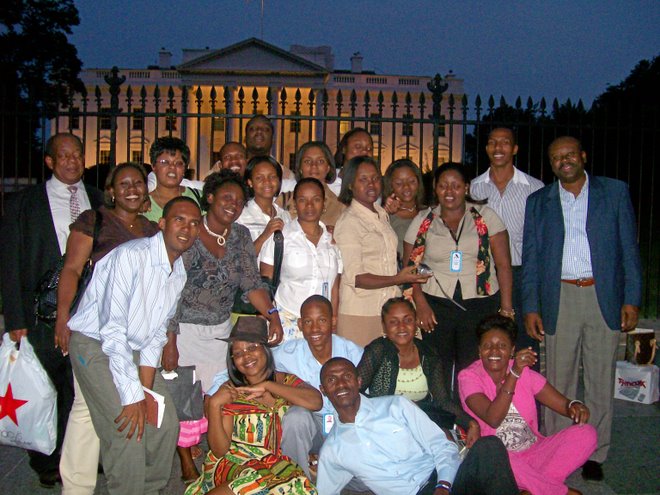
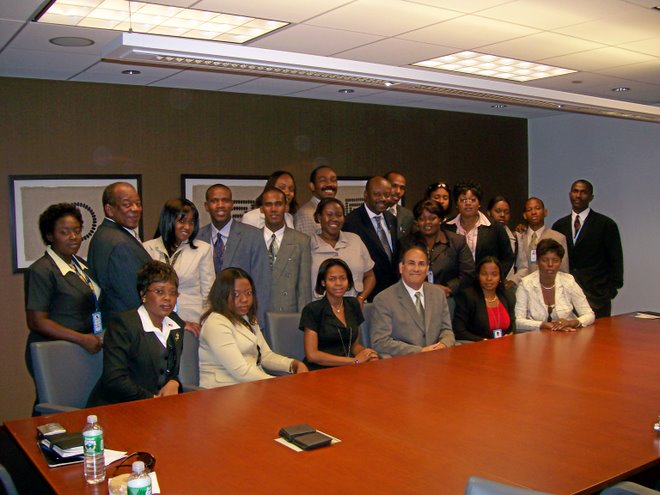

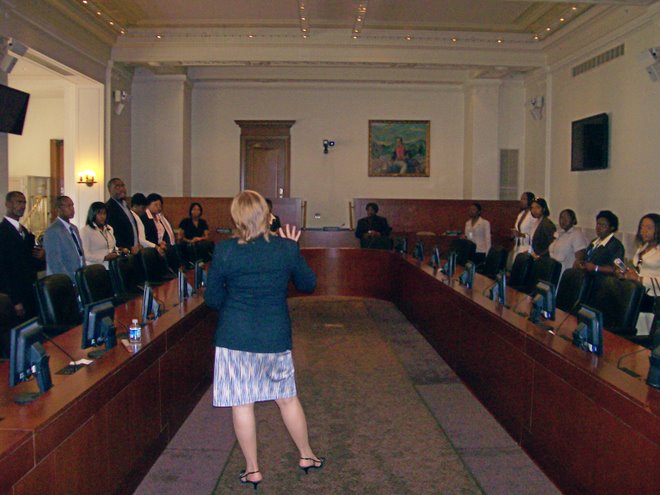
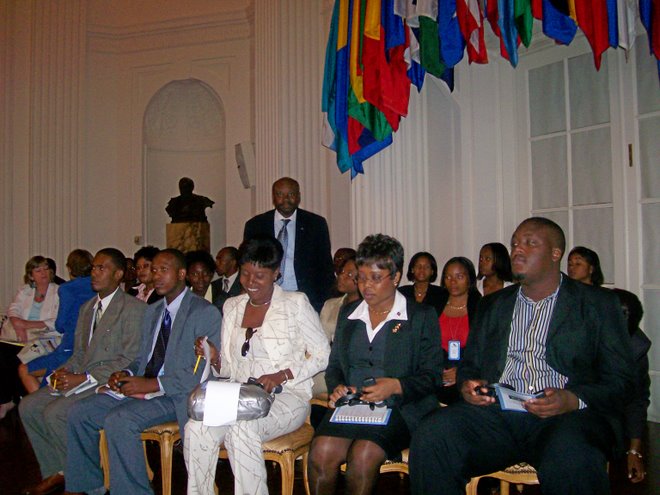
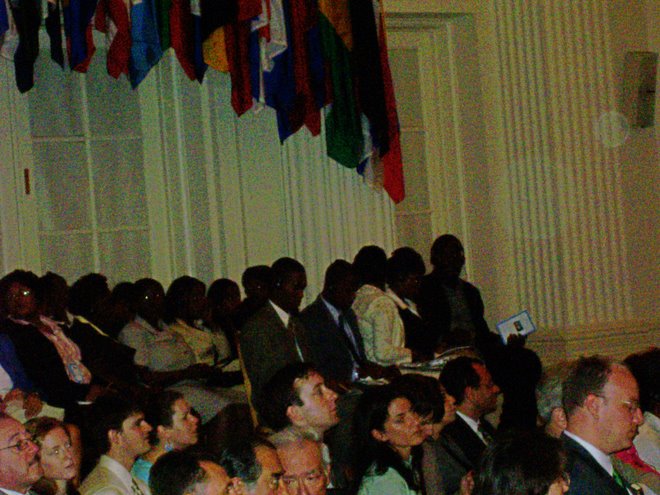








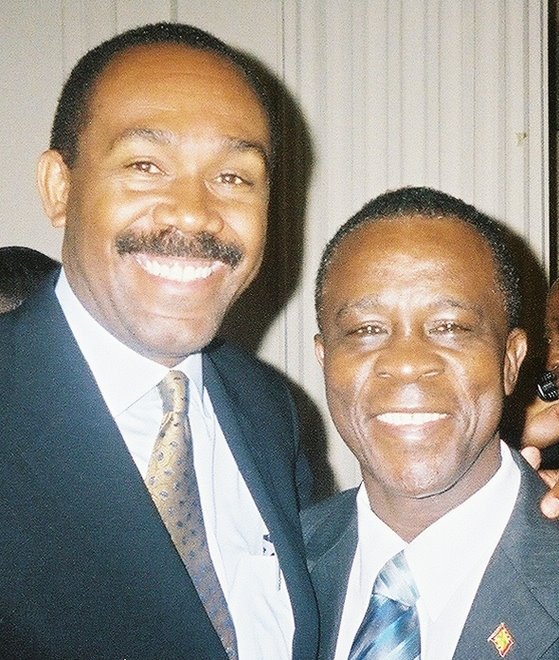
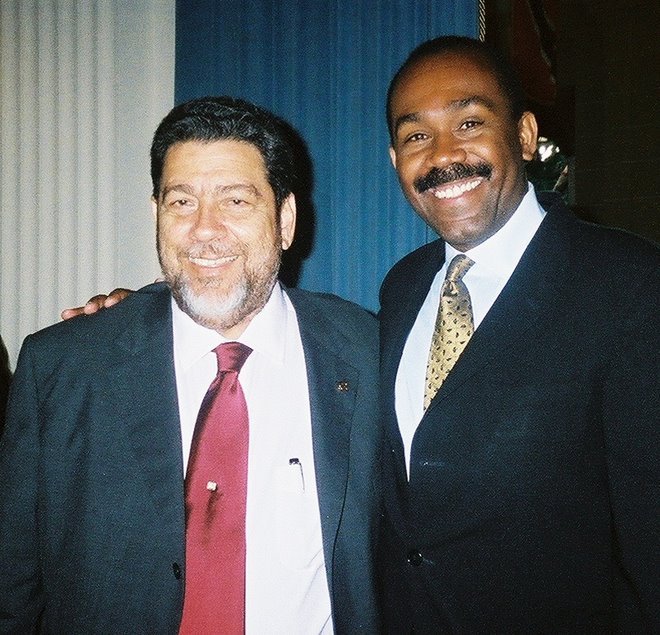


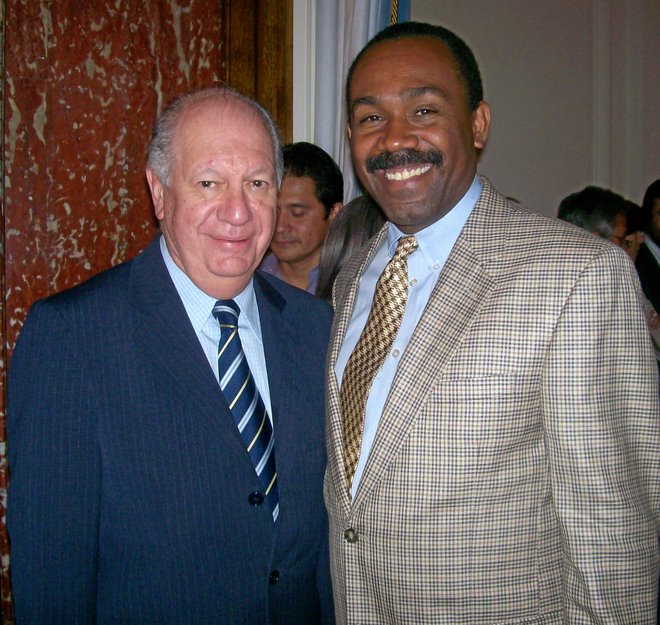
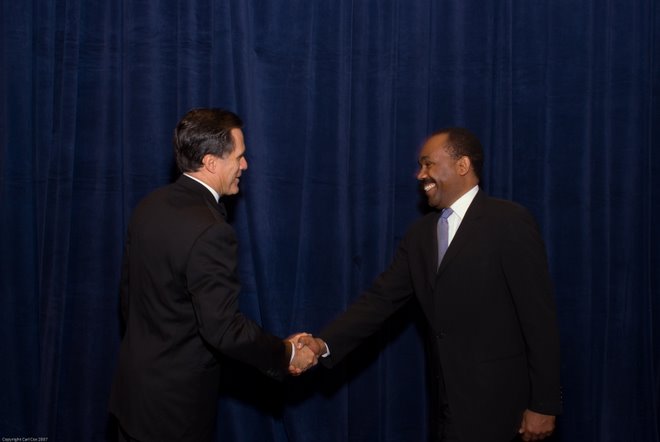
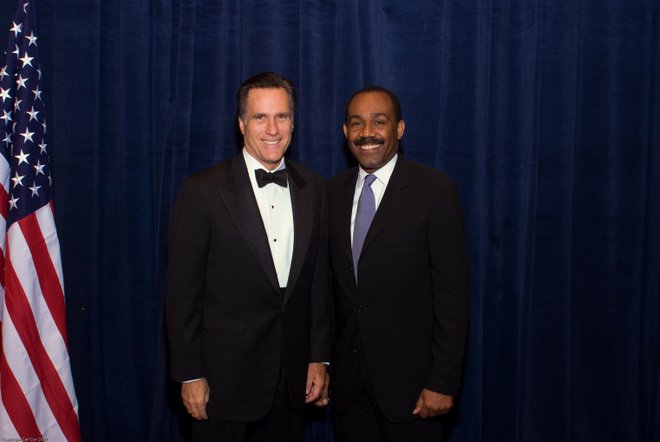
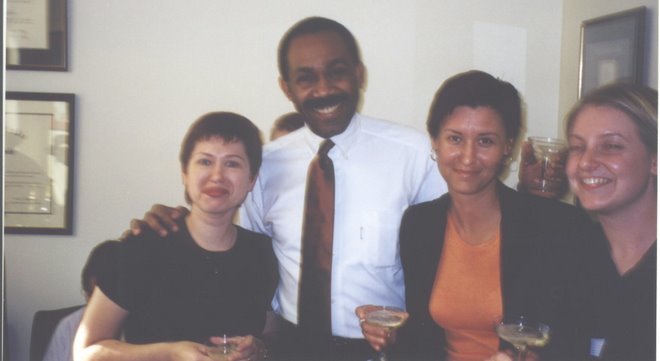
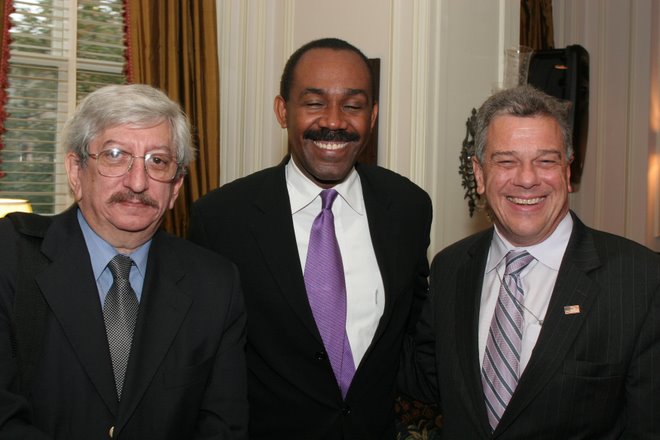


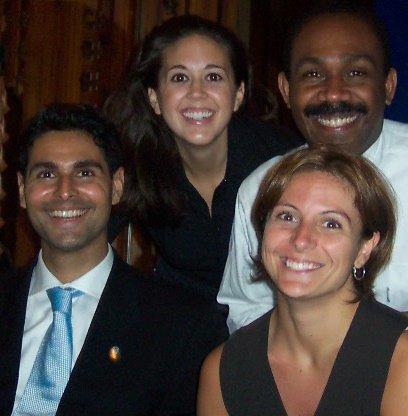
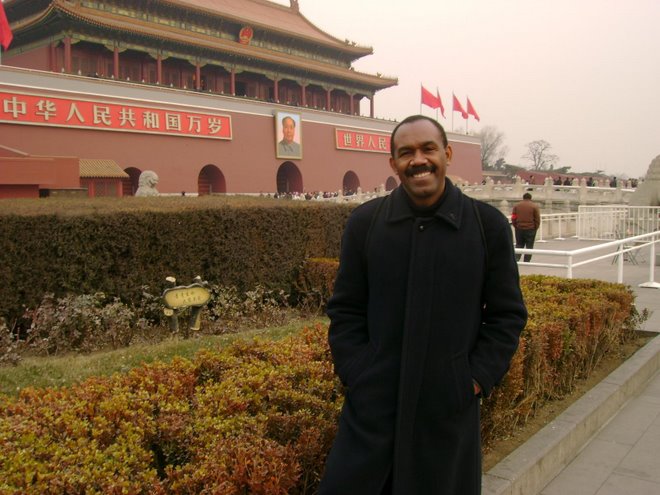

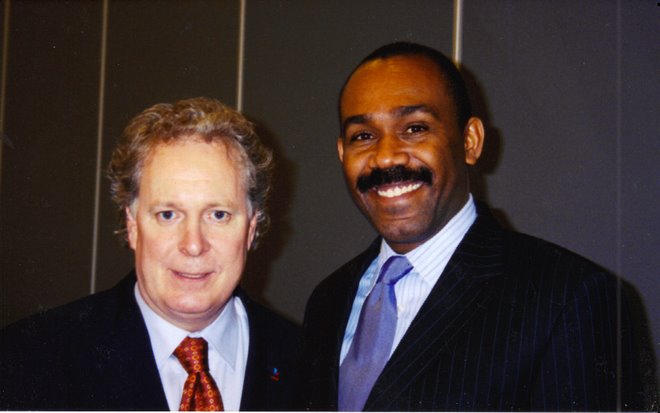

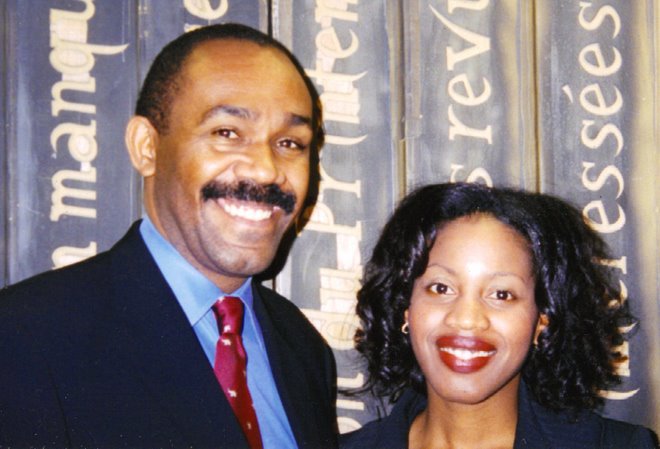
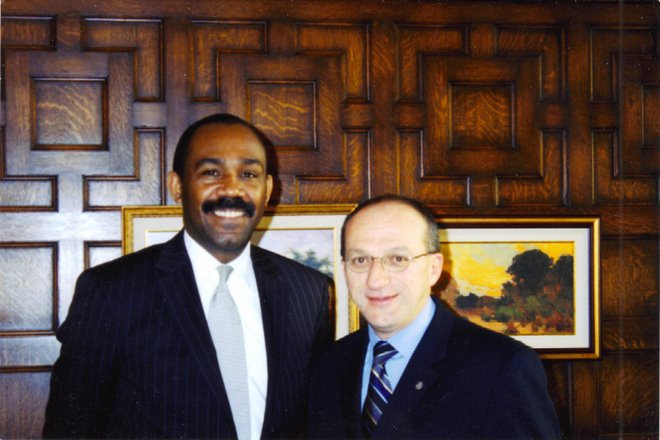
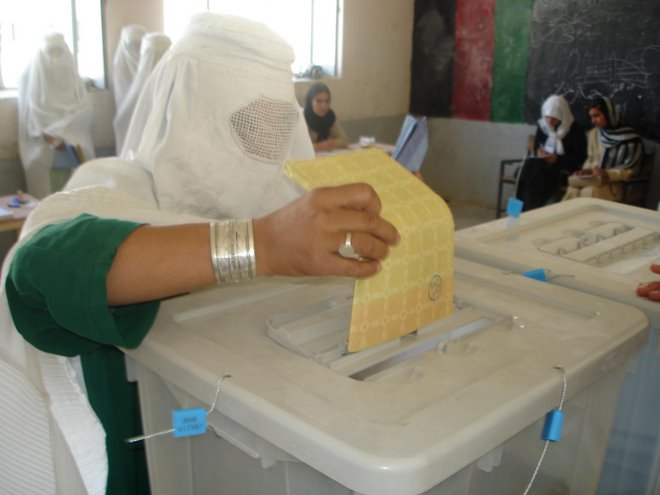

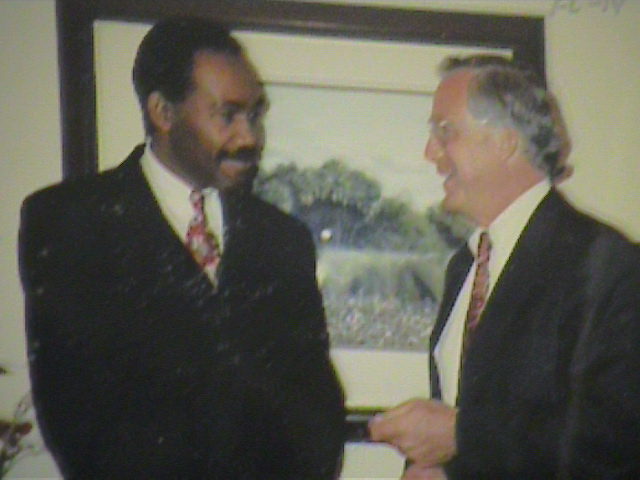
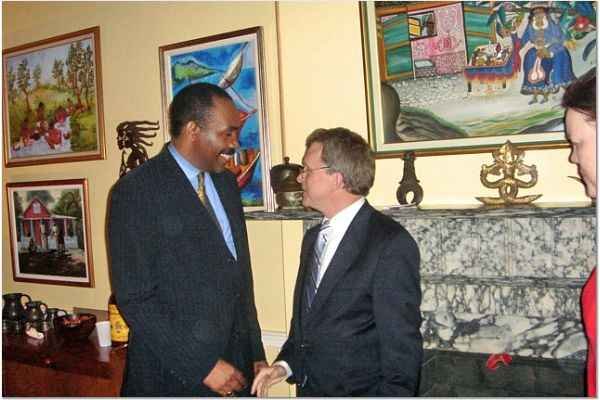

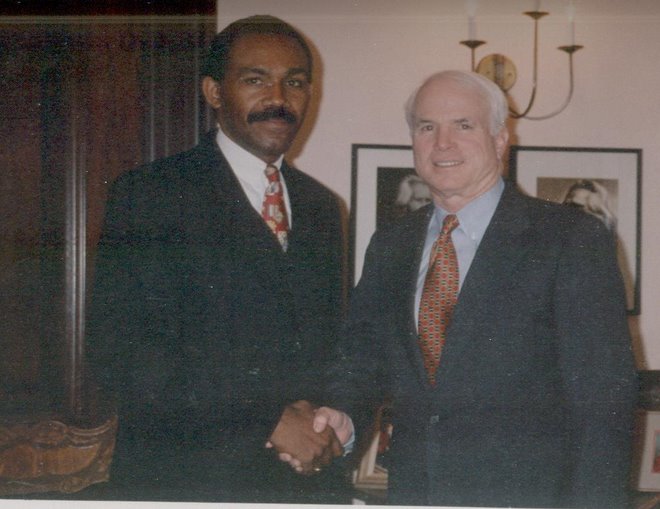

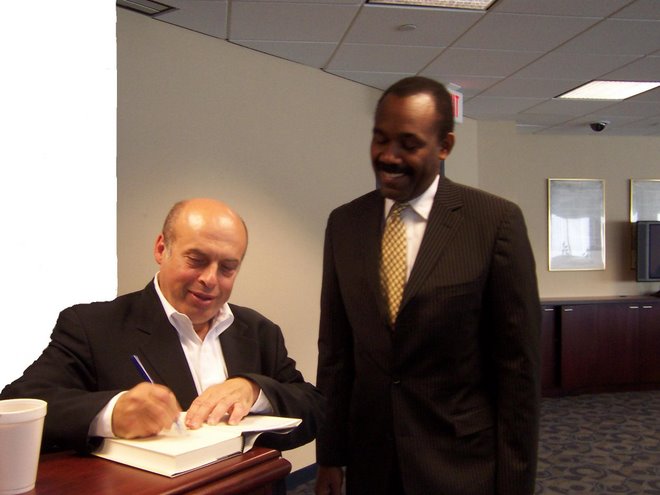
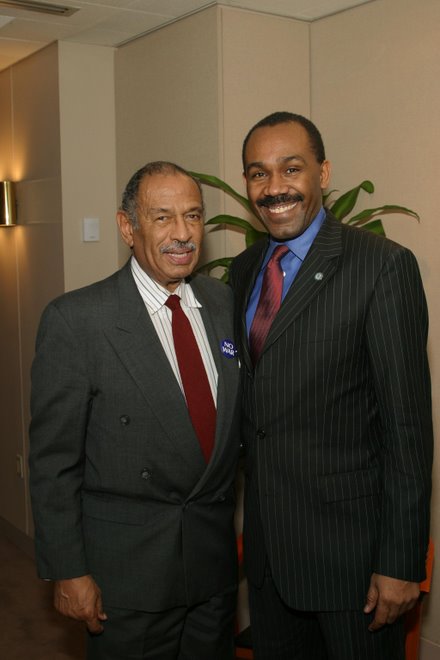
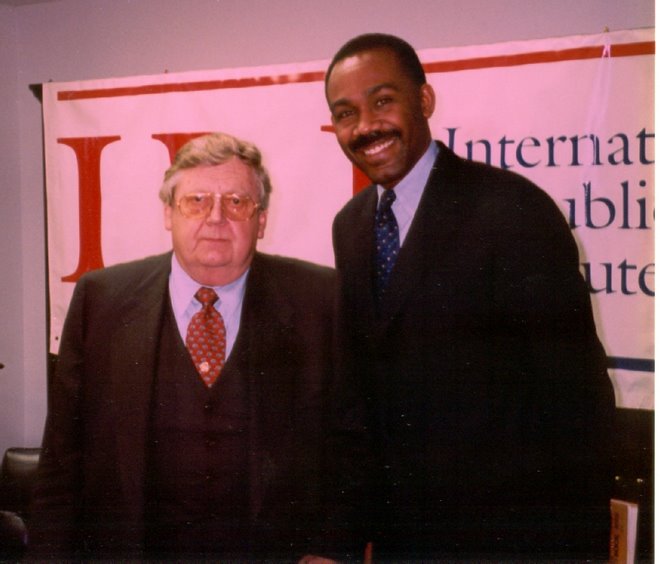
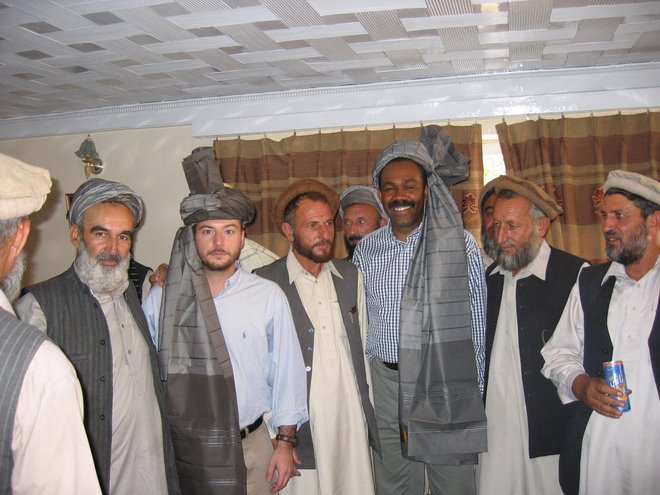
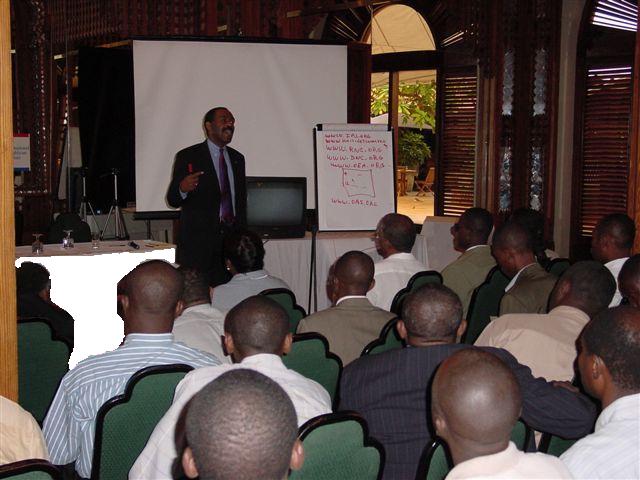

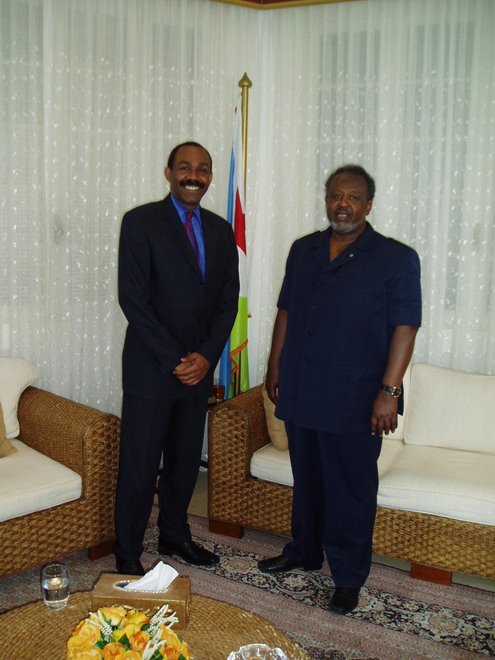
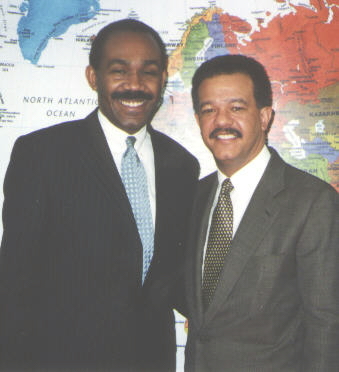

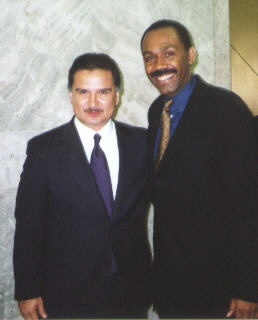
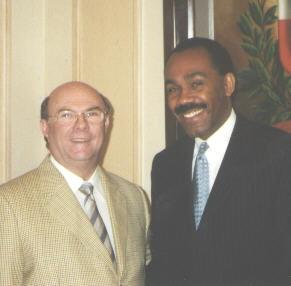
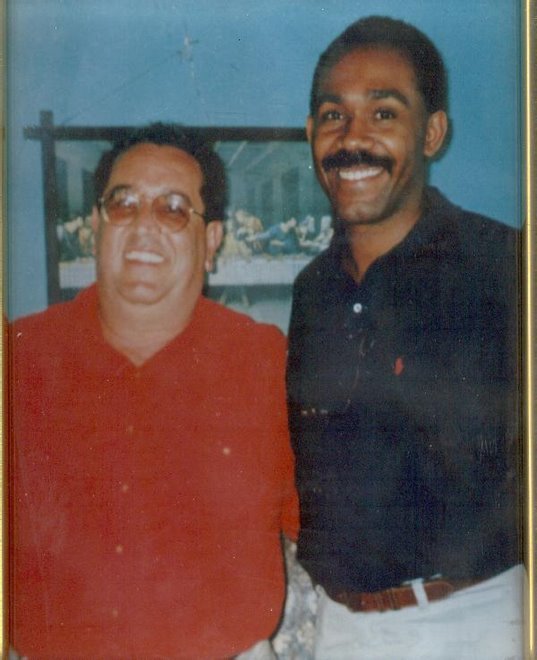
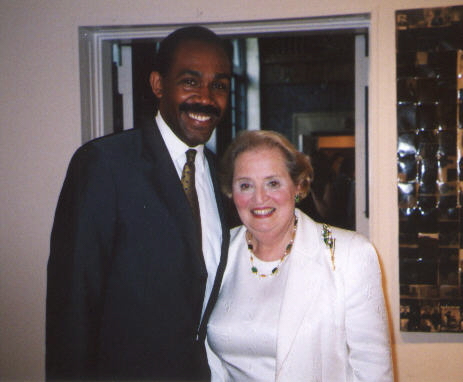
No comments:
Post a Comment